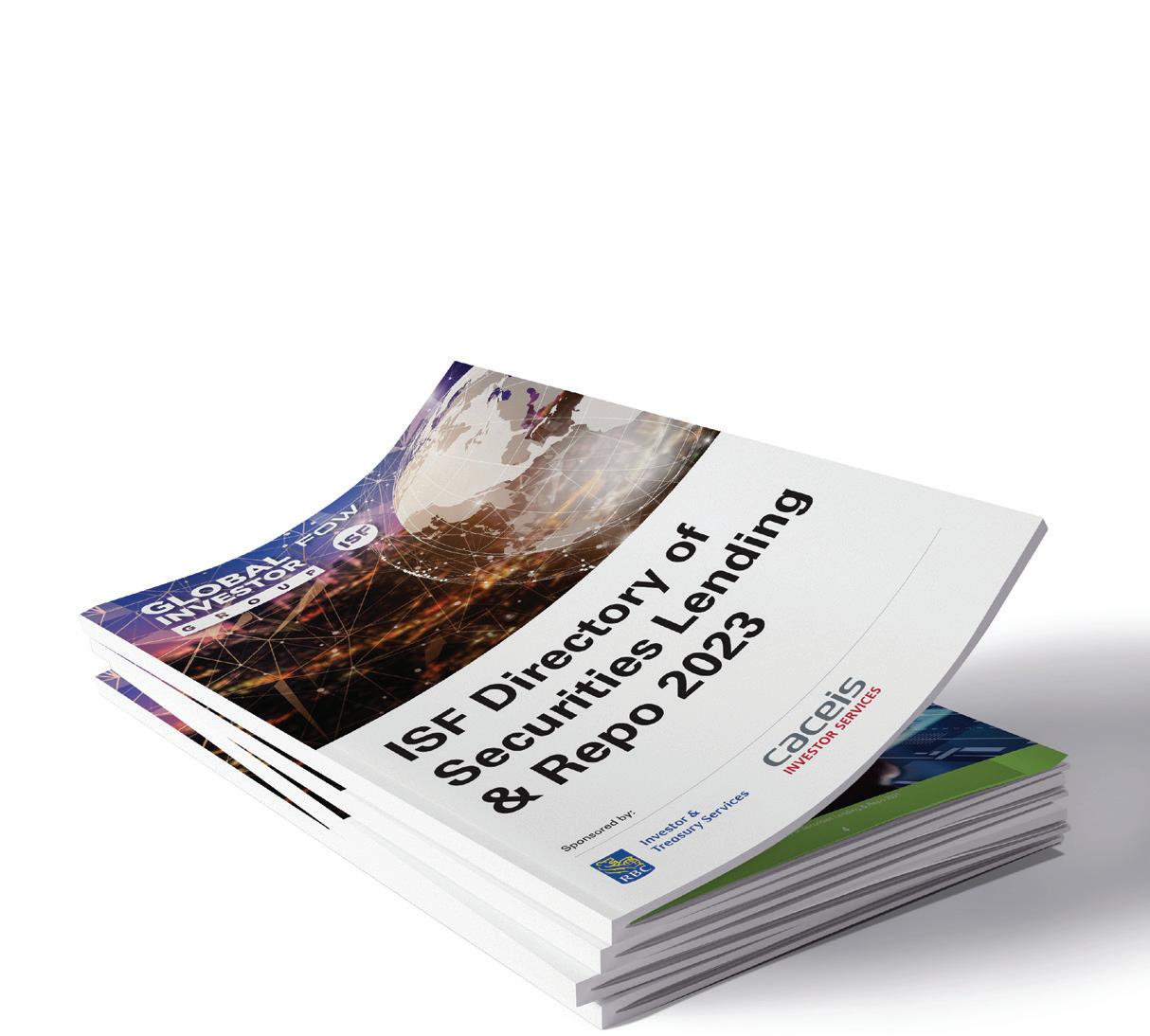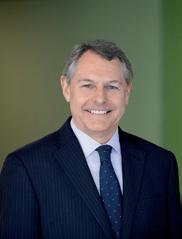Summer 2023 www.globalinvestorgroup.com

CUSTODY
Securities finance
Roundtable considers ESG challenges in stock lending and borrowing

DERIVATIVES
Cboe weighs opportunities in short-dated options

Summer 2023 www.globalinvestorgroup.com

CUSTODY
Securities finance
Roundtable considers ESG challenges in stock lending and borrowing

DERIVATIVES
Cboe weighs opportunities in short-dated options
SUB-CUSTODY GUIDE TRACKS DEVELOPMENTS IN KEY INTERNATIONAL MARKETS reflects on a turbulent year in rates and equities

Caterina Caramaschi was in good spirits when we sat down in July - her first year in charge of ICE’s interest rates and equities markets has presented some “laugh or cry” moments.
The timing of her promotion was impeccable. She took over the rates book (adding to the equities she was already running) on October 3 last year, exactly ten days after Liz Truss’s disastrous mini-budget sent the UK economy into a tailspin, forcing the Bank of England to intervene.
Now, markets (and their operators such as ICE) like volatility but as any trader worth his or her scars will tell you: “There is volatility and there is VOLATILITY”. And UK rates in October was definitely the latter.
Caramaschi’s recollection of that time makes interesting reading (page 10). To paraphrase, Caramaschi and her team went back to basics – they reinforced their measures to support liquidity, they engaged with clients and, when they said “be patient”, Caramaschi and her team rode out the storm.
Looking at the SONIA trading volumes around that time, this basically took three months. September’s monthly volumes were the highest in a single month last year but SONIA trading activity collapsed in October and November, so much so that December’s SONIA total was less than half that in September.
The New Year, however, brought renewed demand for SONIA futures, and volumes bounced back in January, hit a 12 month high in February and broke in March this year 10 million lots in a month for the first time. More recently, April, May and June volumes are all strong, up at least a quarter on the respective months last year.
It is fair to assume that Caramaschi’s second year in charge of ICE’s interest rates and equities arms will not be as fraught as her first but one challenge is already clear.
Deutsche Boerse’s Eurex announced
in June a plan to relaunch in the fourth quarter its Euribor contract backed by a new partnership programme aimed at short-term interest rate futures, an extension of an existing scheme for Eurodenominated interest rate swaps.
The German exchange, which said on June 7 that BNP Paribas, Deutsche Bank, Goldman Sachs, J.P. Morgan and LBBW have already pledged to support the effort, wants to take from London-based ICE Futures Europe some of its vast Euribor book of business, moving that liquidity back in to Europe under the control of European authorities.
The move by Deutsche Boerse is commercially-driven, of course, but it is backed by the will of the European authorities who have made no secret in the past two years of their disquiet with the fact that some Eurodenominated products are largely traded in London and therefore outside of the European Union postBrexit.
The truth is that the nature of the listed derivatives industry makes it inherently conservative. The cost savings from portfolio margining between correlated products in one clearing house and the implicit cost of trading in a market that is still building liquidity combine to make it tough for markets trying to take trading from an incumbent.
Eurex then has its work cut out but the German market is a big and credible supplier while its efforts to take market share in Euro-denominated interest rates swaps tell us that Eurex is in it for the long-haul. Caramaschi and her team will certainly not underestimate this challenge.
Also in this issue, special thanks to the participants in the latest ESG roundtable and congratulations to the winners in the annual sub-custody survey.
Luke Jeffs, Managing Editor, Global Investor GroupEDITORIAL
Managing editor
Luke Jeffs
Tel: +44 (0) 20 7779 8728
luke.jeffs@globalinvestorgroup.com
Derivatives editor
Radi Khasawneh
Tel: +44 (0) 20 7779 7210 radi.khasawneh@delinian.com
Securities Finance Reporter
Sophia Thomson
Tel: +44 20 7779 8586 sophia.thomson@delinian.com
Special projects manager
Anshula Kumar
Tel: +44 (0) 20 7779 7927 anshula.kumar@delinian.com
Design and production
Antony Parselle aparselledesign@me.com
BUSINESS DEVELOPMENT
Business development executive
Jamie McKay
Tel: +44 (0) 207 779 8248 jamie.mckay@globalinvestorgroup.com
Sales manager Federico Mancini federico.mancini@delinian.com
Chief Executive Officer Andrew Pinder
Chairman Henry Elkington
© Delinian Limited London 2023
SUBSCRIPTIONS
UK hotline (UK/ROW)
Tel: +44 (0)20 7779 8999 hotline@globalinvestorgroup.com
RENEWALS
Tel: +44 (0)20 7779 8938 renewals@globalinvestorgroup.com
CUSTOMER SERVICES
Tel: +44 (0)20 7779 8610 customerservices@globalinvestorgroup.com
GLOBAL INVESTOR
8 Bouverie Street, London, EC4Y 8AX, UK globalinvestorgroup.com
Next publication
Autumn 2023
Global Investor (USPS No 001-182) is a full service business website and e-news facility with supplementary printed magazines, published by Delinian Limited.
ISSN 0951-3604
6 Trading Places: GPFA taps ADIA’s Amy Borgquist; Clearstream Banking names Eckermann as chief executive; Brokertec hires

Sara Carter as head of repo; LME announces Warren as chair
8 Highlights from GlobalInvestorGroup.com: Bank of England warns about hedge fund concentration; Nasdaq shelves crypto custody plan; HSBC executes first Dubai securities lending trade; CFTC sets sights on carbon markets
COVER STORY:
10 Caterina Caramaschi has had a year to remember as Intercontinental Exchange’s global head of interest rates and equities with the UK mini-budget and equities markets under pressure

16 LSE Group’s 2021 acquisition of Refinitiv has made the British exchange a market-leader in the global foreign exchange market and the LSE is looking to capitalise on this position
20 Cboe Global Markets has developed many key products in the options space and is using this experience to design new short-dated tradeable instruments
23 US prime broker Clear Street has applied to the National Futures Association to launch a futures commission merchant that will initially support futures in the US and Europe
24 Crude oil index firms Platts and Argus changed in May the make-up of the Brent barrel and this has affected how firms are trading the European crude benchmark
26 Eurex plans to relaunch in the fourth quarter of this year its Euribor contract backed by a revenue share programme which could also drive demand for the exchange’s €STR future
27 Global Investor’s 2023 ESG Roundtable discussed how the securities finance market is responding to the increasing demand for sustainable practices in line with environmental, social and governance principles 40

48 Societe Generale Securities Services considers how network managers are having to change the way they do business in light of new ESG challenges

51 Global Investor Sub-Custody Survey: The 2023 survey tracks the performance of leading providers in some of the world’s most dynamic markets
73 Technology firms have been keen in recent months to discuss the challenges posed to their clients by the US transition to next-day, T+1 settlement, slated for May 2024
77 Lyons O’Keeffe, ESG director at IQ-EQ, argues that a focus on data will help firms step up to the challenges of offering effective ESG products
GPFA appoints ADIA’s Borgquist as international head
The Global Peer Financing Association has appointed Abu Dhabi Investment Authority’s Amy Borgquist (Armour) as the new securities finance trade body’s head of international outside North America.
In her new role, Borgquist is working closely with the Global Peer Financing Association (GPFA) board of directors to ensure GPFA activities are well coordinated globally to best serve the interests of the beneficial owner members of the association.
Based in the UAE, Borgquist is well placed to connect GPFA members across Europe, the Middle East & Africa (EMEA), and Asia Pacific (APAC), the trade body said in a statement.
Finbourne hires Ryan from BNP to run product marketing and solutions
Finbourne Technology, backed by Fidelity Investments and LSE Group, appointed in July Neil Ryan, formerly of BNP Paribas Securities Services, as the fintech’s new head of Product Marketing and Solution.

Prior to his new role, Ryan was the global head of Investment Analytics &
Data Services at BNP Paribas Securities Services. Before that, he had senior data & analytics roles at Citi and Ernst & Young.
Having over 25 years of experience globally in data strategy, product development, business intelligence, data governance and data architecture, Ryan brings an abundance of domain knowledge to Finbourne’s product team, the data management firm said.
Clearstream Banking names
Eckermann as CEO
Clearstream Banking appointed Stephanie Eckermann as the new chief executive officer, effective 1 July 2023.
As the new chief executive, Eckermann will lead the strategy of the bank, and will overlook the bank while remaining responsible for strategy, finance and compliance across all the entities within Clearstream.
Eckermann succeeds Berthold Kracke, who has stepped down from the role and left the executive board of Clearstream Banking. Kracke served as the chief executive of Clearstream banking for eight years.
Societe Generale reshuffles senior management
Societe Generale made in June three senior appointments across securities services, group inspection & audit, and global transaction & payment services divisions.
The Paris-based bank appointed Arnaud Jacquemin as head of Securities Services, Alexandre Maymat as head of Group Inspection & Audit, and David Abitbol as head of Global Transaction & Payment Services.
Maymat began his new role on July
1 2023, replacing Pascal Augé who has decided to leave the bank, Societe Generale said.
BrokerTec hires ex-Morgan
Stanley senior executive as global repo head
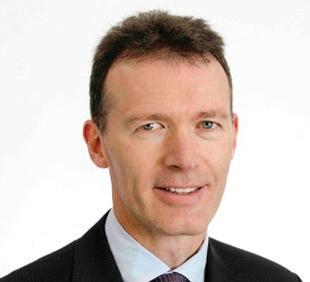
Fixed income platform BrokerTec hired in July Sara Carter as an executive director and global head of repo.
She was previously at Morgan Stanley for over 15 years, where she held senior positions across fixed income sales and trading. Most recently, Carter served as an executive director for nearly five years in client financing sales.
Carter said: “BrokerTec’s repo trading business has a great reputation in the market and I’m looking forward to engaging with clients and developing the business at this exciting time for fixed income.”
ISLA appoints Davidson to replace Jeffcoate as COO
International Securities Lending Association (ISLA) appointed Lee Davidson as chief operating officer (COO) effective June 1, replacing Jamila Jeffcoate.
Based in London, Davidson is responsible for ISLA’s operational activities and daily management of the trade body.
The industry continued to reshuffle the deck in the second quarter of 2023.LEE DAVIDSON NEIL RYAN
Davidson has spent almost two decades within financial services, predominantly on the sell-side, and joins ISLA from fintech firm ZFX where he was the head of global operations.
Previously, Davidson spent over five years at Australian banking firm ANZ as a director of strategic delivery and a senior finance business partner. He also worked at Deutsche Bank and ABN AMRO Bank.
Broadridge appoints Sleightholme as president of international arm
Global fintech Broadridge appointed in July Mike Sleightholme as president of Broadridge International.
Based in London, Sleightholme is responsible for delivering the fintech’s customer support along with its growing portfolio of technology and data solutions throughout the Europe, Middle East and Africa (EMEA) and Asia Pacific (APAC) regions.
Chris Perry, president of Broadridge, said: “At Broadridge, and throughout his career, Mike has an impressive track record of building high performing global teams to deliver business transformation and growth.”
Transcend hires Harris from EquiLend as product specialist
Transcend hired in June Emily Harris, formerly with Barclays and Credit Suisse, to help develop the collateral fintech’s products and expedite its growth in Europe and Asia.
Based in the United Kingdom, Harris is focused on leading Transcend’s securities finance product development efforts and expanding the firm’s global footprint, particularly in Europe and Asia Pacific, the New Jersey-based firm said.
The Global Legal Entity Identifier Foundation (GLEIF) appointed in July T. Dessa Glasser as its new chair,
replacing former chair Steven Joachim who had completed his three year term.
With three decades’ worth of experience in the industry, Glasser is a recognised veteran in financial markets, risk and data analytics, said Basel-based GLEIF.
Over her 35-year career, she had roles at the US Treasury, JP Morgan Chase, Credit Suisse and IBM Global Services, and currently serves as an independent board director at Oppenheimer Holdings.
The London Metal Exchange (LME) has appointed a former interim chief executive at London Stock Exchange Group (LSEG) to head the board of its clearing arm.

David Warren became chairman of the board at LME Clear on July 20. Warren has previously served as chief financial officer at both LSEG and Nasdaq. He took up the chief executive role at LSEG on an interim basis after Xavier Rolet stepped down in November 2017, relinquishing the post when Goldman Sachs’ David Schwimmer took up the post the following year. Warren left LSEG in 2020.
HKEX hires ex-Everbright chief Zhou to focus on Mainland China Hong Kong Exchanges and Clearing (HKEX) hired in July Zhou Jiannan as managing director and head of Mainland Development and a member of Management Committee. Zhou, a recognised veteran in financial markets, now leads HKEX’s engagement with key Mainland regulators, supporting the exchange’s goals to connect China to international markets.
Prior to his appointment, Zhou served as the chair of Jiahe Asset Management in Shanghai since 2021. Before that, he was chief executive at Everbright Securities, chief executive at Dacheng Asset Management and served in multiple roles at the China Securities Regulatory Commission (CSRC).


Hedge fund ‘concentration’ may amplify risk in rates markets – BoE
The concentration of interest rate derivative positions among a small number of hedge funds could pose a systemic risk in times of unexpected policy moves, research from the Bank of England has concluded.

In a staff working paper published in late July, analysts at the central bank found that 80% of sterling swaps, options and futures positions are held by the top five hedge funds – showing that the market is highly concentrated and comprises large speculative short duration positions.
“The degree of concentration in the interest rate derivatives markets could lead to greater risk of market disruptions,” the report said. “A small number of participants account for a large share of interest rate exposures, which could lead to dealer losses and infrastructure disruptions as they are hit with uninsurable idiosyncratic shocks.”
The amount of business being conducted on European primary markets fell to a five-year low in the second quarter of this year, according to a new report from TP ICAP’s trading platform Liquidnet.
Liquidnet published in July its latest Liquidity Landscape report that shows the normal seasonal slowdown in trading through April, May and June though volumes this year are lower than in the same period in 2022.
According to the report, the Average Daily Principal Traded on European venues in June was €48bn (£41.5bn), up slightly on the total in May but down from €55bn in June last year.
Lit primary markets (excluding auctions) accounted for 30% of European trading in April, May and June, which is their smallest market share in the last five years, according to the report.
Distributed ledger technology can play a crucial role in linking systems to promote the straight-through processing of trades, a new report from Banque de France has found.
Banque de France’s latest report, titled: “Wholesale central bank digital currency experiments with the Banque de France: New Insights and Key Takeaways,” highlights findings from its wholesale central bank digital currency (wCBDC) experiment using distributed ledger technologies (DLT). Banque de France made various recommendations in its paper including that DLT enhances the straightthrough processing of trade and posttrade activities; that interoperability should be prioritised to ensure seamless data and transaction exchange between DLT-based and conventional infrastructures; and continued experiments at domestic and international level are essential to advance analysis and efforts to develop an operational framework through a learning-bydoing approach.
The European Central Bank launched a public consultation on its guide to improve risk data aggregation and risk reporting.
Frankfurt-based European Central Bank (ECB) said the guide outlines prerequisites for effective risk data aggregation and risk reporting (RDARR) to assist institutions in strengthening their capabilities, building on good practices observed in the industry.
In the guide, ECB highlights the economic benefits of more accurate data, which includes advancements in digitalisation, improved risk management and more effective strategic planning, which can bring higher revenues and profitability to financial institutions.
Nasdaq shelves crypto custody plan to focus on $10.5bn Adenza merger
Nasdaq has scrapped plans for a crypto custody service as the US group looks to focus on integrating its technology services after its planned $10.5 billion (£8.2bn) acquisition of fintech Adenza.
Speaking as the firm presented second quarter results on July 19, Nasdaq’s chair and chief executive officer said it has decided to pause plans to launch the service after assessing regulatory shifts and the crypto market environment.
HSBC completes first securities lending trade in Dubai
HSBC has completed the first securities lending and borrowing (SLB) transaction on the Dubai Financial Market (DFM), marking a milestone for the Gulf market as it opens up to short selling.
The DFM said on July 20 HSBC executed the trade as a custodian lending on behalf of a large asset owner and borrowing on behalf of another client. The British bank also acted as lending agent and prime broker, borrowing Dubai-listed equities from the asset owner, DFM said.
Two thirds of firms increasing their repo trading activitiesreport
A majority of respondents to a new survey have said their clients are increasing their use of repo and want to execute more of their repo trades on electronic platforms in future.

The Fifth Sell Side Fixed Income Report produced by Acuiti in collaboration with fintech valantic found 10% of sell-side respondents said their clients are making “significantly more” use of the repo markets while another 57% said their clients are trading “slightly more” repo. Another 29% of the sell-side
respondents said their clients have not changed their position on repo while only 5% said their clients are trading less repo.
Wealth managers eye high margin services such as securities lending - Citi The increasing importance of retail investors to wealth managers could drive greater demand for securities lending services, a Citi report has concluded.
The US banking group published in July a report entitled “Disruption and Transformation in Wealth” that tracks sentiments among retail wealth experts, wealth managers and private bankers in Asia, Europe and North America.
The paper suggests that wealth managers are at “an inflection point”, faced by economic uncertainty, the increased cost of doing business and margin pressure.
in 2023 – EBA
The European Banking Authority (EBA) has said bank holdings of derivatives are set to increase further this year, extending last year’s trend as firms look to hedge their interest rate risk.
The Paris-based authority published in July its bank funding report, based on submissions from 159 regional banks. The survey found that firms intend to increase derivatives held on balance sheets by 11%, after a strong increase last year reflecting higher rates uncertainty.
“Holdings of derivatives strongly increased by 22% in 2022, reversing a decrease in 2021, whereas repurchase agreements broadly remained at the same level in 2022,” the funding report said. “Increased derivatives holdings may point to banks’ hedging strategies in a volatile market and interest rate environment in 2022.”
Regulators fine UBS £300m for historic Credit Suisse breaches US and UK regulators fined UBS $387 million (£302m) for breaches related to UBS-owned Credit Suisse’s “unsafe and unsound” risk management practices that caused losses when family office Archegos Capital Management collapsed in 2021.
The US Federal Reserve fined UBS Group $268.5 million while the UK Prudential Regulatory Authority has levied a fine of £87 million, the largest ever by the British regulator.
The fines have been imposed on UBS, which acquired Credit Suisse in March after a forced sale shepherded by regulators in the wake of a bank contagion crisis.
CFTC sets sights on ‘credibility crisis’ in carbon markets
The chair of the Commodity Futures Trading Commission (CFTC) has said the US derivatives regulator plans to goldplate standards in the voluntary carbon markets to tackle their “credibility crisis”.
Speaking at the CFTC’s second carbon markets open meeting in July, Rostin Behnam said the agency will look to support the development of high quality carbon credit markets in the near future.


Few have had a first year in a job like the year Caterina Caramaschi has had as Intercontinental Exchange’s head of interest rates and equities.
By Luke JeffsCaterina Caramaschi, who became the US group’s global head of equities in late 2020, was promoted in early October last year to run ICE’s rates book in addition to her duties in charge of equities.
The timing is significant because the UK economy was in early October still reeling from the Liz Truss mini-budget on September 23 which drove sterling to an all-time low against the dollar and caused a sell-off in gilts.
As the home of the UK interest rate derivatives market through its SONIA franchise, ICE (and therefore Caramaschi) found themselves in early October at the centre of fastmoving financial crisis.
She told Global Investor: “My expanded role into the rates business came at a very challenging time, we had not long finished the GBP Libor to SONIA transition and the rate cycle had begun after over a decade of very low rates.”

Caramaschi added: “At the time, both SONIA and Gilts were struggling because we had heightened global rates volatility and the mini budget which didn’t help SONIA liquidity.”
London-based ICE Futures Europe’s three month SONIA futures had a record month in September as firms sought to mitigate the effect of the mini-budget (see Chart One) but trading volumes collapsed after
that through October, November and December - the first three months of Caramaschi’s tenure in her new role. She said: “One of the first things the team and I did when I started was put in place measures to underpin liquidity in the SONIA future and we are now seeing future’s liquidity improve substantially as a result of those measures and some calm returning into the UK market following the appointment of a new chancellor and the unwinding of the mini budget.”
The longer end of the curve was also hurt by the mini-budget with open interest in the UK ten year interest rate future dropping to 350,000 lots in January.
Caramaschi said these were undoubtedly “tough times” but: “Client engagement was key during this time and all the feedback we got was important. Most said time is a great healer and we need confidence to come back to the UK markets before open interest will improve. This has been proved right as we are now back
Client engagement was key during this time and all the feedback we got was important
above 520,000 lots of open interest and growing. The ten year gilt futures market is definitely fixing itself with the help of our clients.”
Similarly, ICE SONIA trading volumes recovered in the early part of this year, as memories of the minibudget faded, and hit in March this year a monthly record for volumes, topping 10 million lots in a single month for the first time.
Caramaschi added: “What we see is in times of stress and, when capital becomes more expensive, is clients reallocating capital to the best opportunities. US rates and Euro rates are the largest, followed by sterling rates and, in 2022 and also early 2023, clients re-allocated their capital to trade euro rates, via our Euribor contracts and US rates, where they saw more opportunity to deploy their risk.”
While the UK rates book wobbled late last year, Caramaschi is right that
the ICE three month Euribor futures contract had a stand-out year in 2022, trading more than 20 million lots every month in the second half of the year (see Chart Two).
“Our Euribor futures and options had a strong 2022 with over 365 million lots traded, up 66% on 2021. 2023 is also proving to be another good year for our Euribor futures and options, especially in the futures where average daily volume (ADV) is up 10% year-to-date. We think Euribor is here to stay, and we want to continue to work with our clients to build liquidity.”
ICE’s strong Euribor franchise faces a challenge later this year when Deutsche Boerse’s Eurex relaunches its rival Euribor future backed by a revenue-sharing agreement aimed at investment banks, market-makers and other trading firms but Caramaschi declined to comment on this initiative.
She did, however, suggest there
has been a shift in emphasis in recent months as inflationary pressure has eased in Europe which bodes well for SONIA.
She said: “We are now potentially seeing the end to the US and Euro rates cycle. US markets are pricing in one more rate hike, in Europe another two, whereas in the UK markets were pricing another five rate hikes until recently, after the June inflation numbers that all changed and markets are pricing in another three, this could change again.
“Due to this uncertainty in UK rates, vs EU and US rates, we are seeing a lot more interest coming back into SONIA futures and options.”
SONIA futures and options broke their second record this year, after 1.37 million contracts were traded on May 24, ICE said.
Caramaschi continued: “This is the benefit of ICE as an exchange. ICE has positioned its rates business as a multi-
currency offering through Euribor, SARON, SOFR and SONIA, noting that the post zero interest rate policy years would likely see the return of monetary policy divergence.”

As well as SONIA and Euribor, ICE’s three month Swiss Average Rate Overnight (SARON) futures have done well this year, beating half a million lots traded in March and June (see Chart Three).
Caramaschi said: “SARON, which also went through a transition, is also doing very well with average daily volume up 123% year-to-date. We were the guinea pigs as the first exchange to go through a Libor transition with both SONIA and SARON. Credit goes to the rates team as it was a challenge which involved extensive client engagement, ensuring we have market-makers to build liquidity, support from back office and clearing, in addition to IT readiness.”
While Caramaschi is rightly
to this uncertainty in UK rates,
seeing a lot more interest coming back into SONIA futures and options.”
pleased with the progress of ICE’s SONIA, Euribor and SARON books, CME Group is currently winning the battle for the market of derivatives referencing the US Libor alternative,
the Secured Overnight Financing Rate (SOFR). CME launched its SOFR futures in May 2018, closely followed by ICE’s rival product in October that year.
But, for Caramaschi, her first year has been about one thing – securing ICE’s status as the British rates market while the future may see more innovation.
She said: “We are the home of the UK rates franchise, so the focus has been on SONIA in the months since my responsibilities expanded to our rates business. However, we want to expand our multi-currency offering. We still have more work to do to improve SONIA liquidity but we have come a long way. Euribor is doing well but there are opportunities to expand and improve our offering in Euro rates as well.”
One opportunity for ICE could be in Euro short-term rate (ESTR) futures but there are no immediate plans to promote that rate instead of Euribor so ICE is in no rush.
While the Truss mini-budget was the dominant event in UK rates, inflation has weighed heavily on equities
indices this year, restricting demand for hedging products like those offered by ICE.
Caramaschi said: “Equity Index Futures ADV in general are down by volumes across exchanges. Equity markets volatility has been coming off this year and we are close to pre-pandemic lows. It’s no surprise year-on-year ADVs comparisons are down as we are comparing a low volatility year with a high volatility environment last year.”
ICE Futures Europe has two equity index franchises: MSCI where it competes with Eurex and Hong Kong Exchanges and Clearing, and FTSE where ICE rivals Eurex again and, to a lesser extent, Singapore Exchange.
Caramaschi said: “If you’re looking at MSCI Futures open interest, there is a big pool of open interest in our market concentrated in MSCI Emerging Markets and MSCI EAFE (Europe, Australasia, and the Far East) Futures. If you look at traded volumes of global MSCI Futures, ICE has over
70% market share and that is because our MSCI Emerging Markets and MSCI EAFE Futures are established benchmark contracts which, based on notional open interest, are ranked in the top 10 index futures globally.”
A key theme in the equity derivatives market is offering environmental, social and governance (ESG) versions of the main blue-chip lists to allow institutional investors and pension funds to manage better their exposure to the underlying indices.
ICE, too, is working hard in this space. “When we made the decision to go into the ESG space, we decided not to go with “light touch” ESG but instead opt for the “greener indices”, so we started with the MSCI ESG Leaders Indices followed by the MSCI Climate Paris Aligned Indices. We are seeing good growth in our MSCI ESG and climate futures, volumes are up 24% year-to-date and notional open interest has exceeded $1.5billion (£1.2bn) up 51% year-on-year” said Caramaschi.
She continued: “ICE doesn’t just offer futures on ESG and climate indices, one of the many things ICE is proud about is we have been a global leader in environmental markets for nearly two decades. We offer the most liquid environmental markets, and our range of products are integral to valuing externalities and balancing the world’s finite carbon budget.”
Another important opportunity for equity index derivatives exchanges like ICE is offering products that are customiseable, enabling investors to take advantage of contracts that mirror more accurately their specific investments.
Caramaschi said: “We are also getting requests for more futures on customised ESG and Climate indices. We could have taken the stance that we are only going to list futures on one ESG variant and that is the only product clients can use but, at the moment, everyone has their own definition of ESG/climate, so we have to accommodate for this.
“So, if clients want a future on a bespoke index because it perfectly matches what they are benchmarked to, we are happy to list futures on it. A prime example is our recent launch of ICE MSCI Low Carbon Target Core Index futures, this was client led and we have already had trades in these contracts.”
There is a lot of talk about the prospects for ESG index derivatives but the truth is - trading of these products remains light compared with the parent contracts.
Caramaschi said it is “still early days” for ESG and climate fund futures but she is bullish: “Driving us is the demand that we are seeing from the Nordics and from North America, specifically Canada. There are asset managers who are mandated that if there is an ESG variant on an index, they must trade that so we want to ensure we can facilitate this business. At the end of the day, we are only here to provide risk management tools and, if there is client demand, we will deliver.”
ICE Futures Europe launched on June 26 futures on the FTSE 100 ESG Risk Adjusted Index and the FTSE All Share Risk Adjusted Index, new indices from FTSE Russell and the first ESG variants for the benchmark UK indices.
An interesting opportunity for ICE is its FTSE Total Return Future, the group’s first total return future launched in November last year, some 18 months after Eurex made available its own FTSE 100 TRF.
Caramaschi said: “It is more capital efficient to trade the FTSE TRF on our market because we have a huge pool of open interest in FTSE 100 futures and options which offers 90% offsets to the FTSE TRF positions. TRF are still a fairly new products so there’s an element of educating customers as to the benefits that they can get from trading on our market. We also have a fee holiday in our FTSE TRF that will last to the end of the year and we do not charge maintenance fees.”
Much has been made in the US
of the retail trading revolution that started in the COVID lockdowns and manifested into the meme stocks phenomenon, leading US exchanges such as CME to launch more smaller versions of their flagship contracts aimed at retail traders.
But Caramaschi is sceptical whether those types of products make as much sense in Europe. She said: “We had a mini-FTSE future many years ago which was largely targeted at retail and it didn’t really trade. We have to ask: “If we list a micro future on say the FTSE 100, are we going to get new business or are we fragmenting liquidity in an established product? The last thing we want is to fragment
liquidity?”.
She added: “There are some successful micro futures, mainly in the US, but most outside the US are currently just churning volumes with no meaningful open interest growth. Is this adding value to the market? We are watching the micro futures space closely but at the moment I don’t think there is real demand for a micro future on the FTSE 100 Index, however if this changes we are always willing to accommodate.”
Caramaschi’s second year in the role will surely be less fraught than her first but she will busy, managing the various challenges and opportunities faced by two of ICE’s core markets.
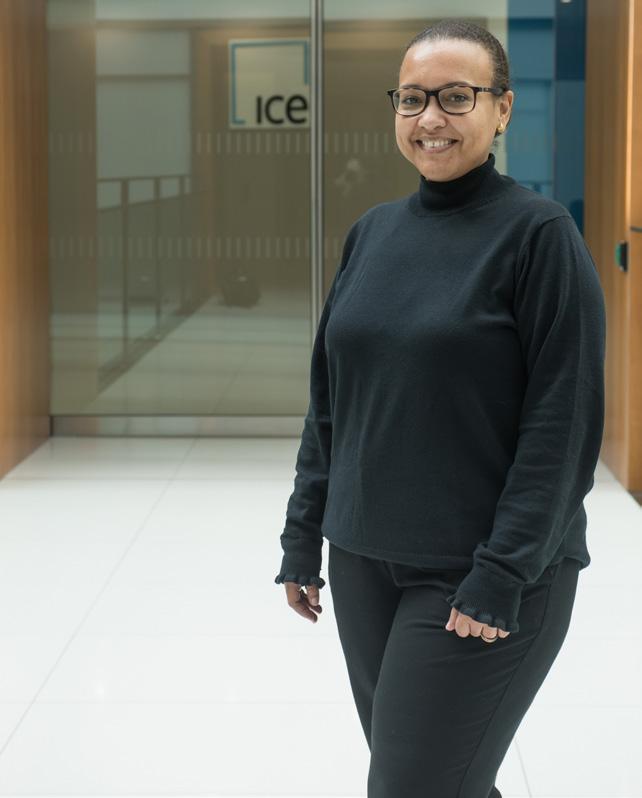
The FX market, a long-standing leader in terms of electronification, needs a technical overhaul and the LSE Group (LSEG) plans to put itself at the vanguard of that market structure change.
The firm created a behemoth after the British group sealed its $27 billion (£21bn) takeover of data and tech firm Refinitiv from Thomson Reuters in early 2021. The move launched LSEG into a position as the largest exchange by market share last year, with 18% of total exchange industry revenue, according to figures from consultancy Burton Taylor. Behind the headline noise around the landmark deal was an intriguing challenge for the firm – how to bring together disparate but market leading elements of its FX business into one compelling solution for clients.
With the acquisition, LSEG had two leading FX trade venues - FXall, a preeminent electronic aggregator, and Refinitiv Matching - designated by the Bank for International Settlements as one of only two “primary venues” running central limit order books for the FX market (the other being CME Group’s EBS). LSEG’s LCH, the clearing house bought in 2013, also
has a dedicated FX clearing division called ForexClear. Those elements can be brought together to reflect and drive changing execution trends in the market, according to Neill Penney, group head of FX at LSEG.
“Our vision is to have one FX platform that serves not just all current our venues but all types of execution paradigms in the FX market - from Central Limit Order Book (CLOB), to secondary Electronic Communication Networks (ECNs), to streaming liquidity and to Request For Quote (RFQ) protocol trading,” Penney told Global Investor. “We want to build that platform on a state-of-the-art technology stack, with a common set of services, including credit management, regulatory reporting and straightthrough-processing analytics. That’s the way our customers will get the best experience; they connect once into our full set of venues and everything is then available for them in a consistent way.”
The technical work alone has been quite an undertaking. After the acquisition, the firm announced plans to migrate FXall, the leading primary ECN for dealer-to-client activity, and FX Matching, its interdealer market, to the Millennium technology platform
LSEG uses for equity trading. The upgrade and revamp for Matching is expected to make the platform 10 times faster, according to LSEG chief executive David Schwimmer on an April earnings call.
“Coming into LSEG has been transformational for our FX business,” Penney said. “LSEG has extensive experience of running key market infrastructures on standardised technology. On the FX side, we’ve embarked on a multi-year project to move everything onto that single platform. This will enable us to create a unique and integrated offering in the FX space. We started the work shortly after the acquisition closed, and the first customer rollout will be the launch of our NDF matching platform in Singapore later this year.”
The non-deliverable forward (NDF) Matching venue in Singapore, the group’s first Asia hub, was first announced in May last year, and is set to launch in the middle of the fourth quarter of this year.
For Penney, a key differentiator is the relationship with the LSE clearing house. FXall already has a link with LCH’s ForexClear, which has carved out a niche with NDF clearing over the last decade. ForexClear’s most cleared currencies are all emerging market pairs, with an emphasis on Asia.
“We believe we already have the largest network of professional bank users in the FX market,” Penney said. “40% of those are based in Asia. That’s particularly relevant for our NDF platform with Asia being the main hub for NDF trading, and more generally for the future as FX markets expand Eastward.
What has been transformational for the FX businesses is coming into the LSEG which already runs key market infrastructures on one technical platform
Neill Penney, LSEG
“We’re launching a venue close to where our customers are, and building a capability that works well for both automated and manual trading. Support for manual trading is especially important; in this day and age, when somebody puts an order into a system manually, it’s an important order. It creates valuable order flow that in turn will attract more orders onto the venue.”
That shift is important as the nature of FX market behaviour has shifted. The latest BIS Triennial figures showed an increase in the share of FX trading using swaps versus a declining spot market, and a shift toward parity between interdealer and the traditionally larger dealer
to customer liquidity pools (see chart).
The figures reflected a highly volatile market environment last year, and the BIS also noted that more trading (relatively speaking) is taking place bilaterally.

LSEG can play a role in reversing that trend, and the NDF platform will be followed by the addition of spot and forward matching in the venue from the middle of next year. In that sense, the first launch will be a technical use case that allows customers to engage with the functionality.
“The second thing the launch of NDF Matching will do is showcase the increased ability we have to innovate as we migrate to newer technology,”
Penney said. “Building clearing deeply into the heart of the NDF matching engine is a true innovation, and we’ll be doing this on a platform where latency, capacity and performance is an order of magnitude better than anything we have now.
“The release will also act as a proving ground for users before we move the main Spot and Forward matching engines across to the new technology. Migrations are a lot of work for clients – and involve operational risk –therefore the opportunity to approach the migration of these key venues via the launch of a new venue provides an incremental route that has been welcomed by them.”
Ultimately our goal is to build that on one state-of-the-art platform, with a common set of all the things that sit around that functionality – including credit management, regulatory reporting and straight-through processing analytics
Neill Penney, LSEG
Instead of getting tied up in delivery dates, LSEG is looking to prepare the market for the additional functionality as it comes on board. That will also be informed by its deep experience in the space. For example, FXall will have another tilt at creating a secondary ECN within its platform.
“In setting the timeline for the Spot and Forwards Matching migration, our priority is to make sure the FX industry is ready for the move, rather than to hit a pre-set date,” Penney adds. “Beyond these initial phases, our next step is to leverage some of the agility we believe the new platform will provide. Initially, we’ll do that by launching a secondary ECN. It will provide customers with a valuable supplement to our Primary Market offering. It’s something
we’re excited to reintroduce as the technology in the old FXall Order Book is no longer able to keep up with market requirements. The final piece of this very ambitious initiative is to move the FXall RFQ engine, likely in 2025.”
The other advantage LSEG has is its terminal and desktop business, with functionality embedded within its Workspace offering creating a network and allowing more innovation.
That has come with opportunities to enhance the growing bilateral market identified by the BIS, with enriched functionality that taps into its existing trading functionality, such as its FX Trading desktop portal that allows messaging and matching. Those streams have recently been brought together in a service called Advanced Dealing.
“That human element – the need to support manual trading – is an equally important part of our strategy to supporting automated electronic trading,” he said. “Our Dealing network connects interbank traders in every FX dealing room in the world. As part of our FX investments, we’ve built a next generation version of Dealing, appropriately called Advanced Dealing. This is part of our new desktop offering, Workspace. The design goal of Advanced Dealing was to set it up for the next generation of users and banks, without losing what made it special in the first place – the capability for human traders to connect globally, and efficiently execute any type of FX trade, whatever the size or currency. This capability remains extremely valuable to the market, whatever the level of automation with more liquid trades.
“Emerging Markets are a good usecase, and in fact the first trade on the new system involved a counterparty in Nepal. But we also wanted to modernize. This means enabling API usage, so institutions can provide
Source: Burton Taylor estimates
LSEG leads the industry regarding market share, with ICE next.
Migrations typically are a lot of work for clients, so the ability to launch new venues with any specific onboarding requirements represents a much more convenient and less risky approach
automated support to augment the salesperson or trader. For example, by attaching a ‘bot’.”

Integrating and updating user workflows essentially means simplifying the user experience, and LSEG is in the process of allowing traders on LSE majority-owned fixed income venue Tradeweb to simply complete related FX trades in a window within the Tradeweb platform. The hedging solution, first announced in June last year, links emerging market bond trades to hedging needs in currency swap markets.

“If you’re an EMS provider whose core business is serving advanced execution needs for equity or fixed income traders, the cost of supporting FX execution as a secondary asset class is becoming increasingly unappealing as the complexity rises,” he added. “Part of our vision with our new FX venues is to enable them to become an alternative for EMS providers looking to provide FX offerings to their customers. Essentially, for these providers to see our FX venues as an attractive ‘manufacturing component’.
“We have been pleased by the level of interest across the industry to this approach and are excited by the partnership opportunities ahead. It’s an opportunity to provide customers with an improved FX execution experience and enable the EMS providers to devote more of their development budgets to their core equity or fixed income execution functionality.”
A similar effort is underway to link analytics functionality in TORA –the multi-asset class cloud analytics provider LSEG bought in February last year – to its FX liquidity directly through the network.
“The other way we think about
partnerships is to enable customers to combine our platform with specialist capabilities they have purchased from other vendors,” he said. “We want to simplify connectivity, such as messaging flows, and streamline the user interface experience. I see this as a growing focus for us in the future once our initial technology modernisation is complete.”
Going back to that huge change in the firm’s position in the overall exchange revenue landscape after the acquisition, Penney sees all of these initiatives combining to create a roadmap for where the company is looking to go.
“The evolution of the role of execution platforms within the overall market structure has been at the heart of our thinking,” he said. “What is exciting
for me is that at LSEG, we have such a wide range of ingredients available to respond to customer needs. Across the company, we have execution venues, clearing capabilities, STP networks, execution workflow tools, multi-asset EMS’s, a new desktop product, and of course extensive market data.
“It enables us to think about solutions that wouldn’t be possible without all those pieces. Our cleared NDF Matching venue is a good example of this – its new for the industry, and the seamless integration between execution and clearing enables us to deliver the maximum possible benefits to our customers. This approach is something I see being replicated in other product areas because it enables us to help move the industry beyond its current level of technological advancement.”
The evolution of the role of exchanges within the overall market structure has been key to our thinking, and what I think is very exciting for LSEG is we have venues, exchanges and market data as well as the post trade side of the business
macroeconomic events. The utility of these options has led to the explosive growth we’ve seen in volumes. That growth is not only coming from the short-dated or 0DTE options bucket, but across the SPX complex as a whole. Even on record days, we have not seen shifts in the volume ratios between 0DTE and the rest of the SPX flow. For example, on March 10 this year, we saw record volumes in SPX but 0DTE trading only accounted for 41% of all SPX volume that day.”
By Radi KhasawnehCboe Global Markets has a long track record of firsts – from index options through volatility trading to listed crypto contracts. At the end of last year, the Chicago-based exchange group took a fresh approach by bringing together a dedicated team in a formal innovation hub.
Global Investor talked to Rob Hocking, global head of product innovation and the person in charge of shepherding development at Cboe Labs. Cboe is in its fiftieth year and Hocking has been a member and trading permit holder of Cboe options exchange for nearly twenty of them. Trading behaviour in the options market has changed significantly in that period, and that shift is only accelerating. The exchange’s flagship S&P 500 (SPX) index options product suite has gone from strength to strength and has ridden the wider wave of US equity index options growth, but it is the users and their needs that represent the most dramatic changes.
Back in May, Cboe chairman and chief
executive Ed Tilly opened his results call welcoming record performance, driven by a 28% growth in options revenue across its four venues. Nearly 43% of its first quarter SPX volume was made up of zero-day-to-expiry (0DTE) options or single day options, more than double where they were two years ago. The strength and persistence of that flow has caused a lot of debate in the market, but it’s clear from rival exchanges the trend has now accelerated across asset classes. People want to trade with more frequency and flexibility, and that makes sense to Hocking.
“Over the past two decades, there has been continued customer demand for the ability to trade with greater precision around market events,” Hocking said. “What we have seen is the culmination of that process with the growth of daily or 0DTE options, which have been available before, but wasn’t as robust of a product set as we have now.
“With daily-expiring options available today, it is possible for investors to accurately and more costeffectively reduce volatility around
In March 2020, amid the trading frenzy around the Covid pandemic, there was a boom in equity trading across platforms – driven by retail flow that came to be known as the “memestock” phenomenon. Commentators tended to lump that together with the increase in shorter dated activity in options, particularly in equity markets but Cboe believes the truth is more nuanced.

“An interesting point that bears that out is the very balanced mix of users we have, where customers make up approximately 41% of the volume, firms are 8% and market-makers or liquidity providers comprise the remaining 51%,” Hocking added. “If we focus on the customer capacity, as of July, about 75% of all SPX customer volume originated from retail broker platforms. If we only look at 0DTE, that number jumps to around 90%.
“It’s important to note that order flow is coming from what we’re calling retail broker platforms, which does not necessarily mean retail or an individual investor. As we can’t see where these orders originate, we can only make an educated guess around exactly how that
breaks down. What I can say is that the feedback has all been positive, and we continue to hear from a diverse group across institutions, systematic algo traders, registered investment advisors (RIAs), even larger retail investors that are engaging in different 0DTE strategies. It’s this broad and diverse user base that’s creating the robust and liquid market that we have today.”
That is only just beginning as the pool of players widens out and people begin to test the waters of what is possible in this new environment.
“Even large volatility players on the street, who have become active in these contracts, say the growth of 0DTE has led to one of the biggest shifts in how they’re managing risk, and changing the way they trade volatility,” Hocking added. “We’re really excited about the continued growth that we believe we will see. More and more industry participants are asking for our open/ close data source to back-test shortdated options trading strategies, and seeing how they can bring that liquidity pool into their existing execution playbook.
“Some firms are still in the early stages of figuring out how they can best use these tools today, and we see potential for continued growth and adoption over time.”
Where a systematic trader is using an overwriting strategy (selling protection where they see options are overpriced), the more exercise windows the trader can cycle through, the more opportunities they have to maximize the profitability of the strategy.
And even traditional indicators of a one-way market (such as the put-tocall ratio) point to a healthy ecosystem, counteracting the hyperbolic commentary that has sometimes attended the growth figures it has seen.
“So far, the vast majority of those strategies are defined risk trades, with what you might call limited downside,” Hocking said. “That would be the selling of spreads and buying of outright options across a wide range of strikes. What that does is limit
concentration risk. As of July, 41% of all SPX and 0DTE trades were spreads. The balance were single-leg option orders, with the vast majority originating as buy or long orders. So that is limited risk and defined outcome trades, and the best way we can show that is that the balance of put/call ratios is typically around one to one in 0DTE. This is really much, much lower than the historical 1.5 to one put/call ratio that we’ve seen in SPX. We also see momentum trades, or trades serving a particular purpose – whether that’s trying to capture premium or yield overlay position.”
All of that is important because it forms the genesis of a significant recent move shepherded by the product
innovation team at Cboe – the creation of the one-day VIX (VIX1D) index in April. Its original Volatility Index (VIX) launched in April 1993, providing a measure for 30-day implied volatilitybased S&P100 options prices (switching to SPX in 2003). The measure became widely used by the market and led to the launch of futures and then options on the VIX in 2004 and 2008.
On the index side, Cboe added threemonth, six-month and one forward implied numbers, and created a nineday VIX in 2018. One thing none of those capture sufficiently is short-dated options to reflect that new trading flow. The 30-day calculation methodology for example only takes into account options that expire in the 23 to 37 day range.
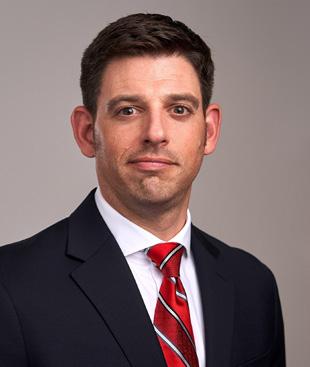
“The VIX1D was created to answer customer demand for a volatility measure that captures trading in short-term contracts.” Hocking added: “That to us was a natural next step and expansion of the VIX Index suite. The other indexes just weren’t designed to capture extremely short-term signals. So, the intention was to provide a tool that would help market participants make more informed decisions around positioning and timing of their trades given the evolution of the market.”
The new index saw some wild swings just after launch, demonstrating the difference with the other measures and prompting some to ask whether there would be derivatives launched.
“We have no immediate plans to make VIX1D tradeable – nor to launch a product directly on this index,” Hocking commented. “That said, our process for product innovation always begins with first understanding our customers’ needs. So, while there was a clear rationale for launching the VIX1D index, we continue to take the time to educate market participants and make sure everyone knows how it works. Let the marketplace digest it, model it, and really understand it so that in turn, they can provide the necessary feedback to guide us in delivering the right tradable product. We’re in that process right now.”
Even large volatility players on the street, who have become active in these contracts, say the growth of 0DTE has led to one of the biggest shifts in how they’re managing risk, and changing the way they trade volatility
Rob Hocking, Cboe
That collaborative approach is core to what Cboe is doing with its innovation hub. The history of such teams goes back to the fabled “skunk works” division at Lockheed Martin. There have been many research and development focussed divisions at investment banks and technology firms. Creating a space dedicated to innovation is nothing new, but what differentiates this latest iteration by Cboe is that it aims to give users a voice at the start of the design process.
“We have a rich history of innovation as an exchange, but what remains a challenge in the innovation process is knowing where to start,” Hocking said. “With the introduction of Cboe Labs, we have a dedicated team centred on the creation, development, and implementation of new ideas. It’s a touchpoint for the industry to come when firms are looking to create something new. We strive to take a customer-driven approach when looking at these new ideas. Nobody knows how to evolve a product, or the need for a product, better than those using them to manage risk. The differentiator for Cboe is that as the exchange platform, we’re uniquely positioned as a neutral partner. We
operate a global platform in 26 markets around the world and have industryleading expertise in developing and supporting tradable products.
“Many innovation hubs are also very internally focused, so you don’t get access to them as an outsider. That’s where we want to go 180 degrees in the opposite direction. We want to work with the market. We want to be the first call for everyone when they have ideas to improve that risk transfer process, that customer experience and we are fully committed to supporting our clients. In that sense, what we have created is a resource for the industry.”
First on the horizon are dispersion strategies, a version of volatility trading that involves taking a position on an index through the option, and taking a series of opposite direction on the components. For example, you could sell volatility on an index and use atthe money-straddles to buy volatility in the individual names. This makes for a cumbersome trading flow which in turn can create barriers to entry.
“We hope that the new Cboe S&P 500 Dispersion Index – and subsequent futures that we plan to launch on it –will do the same thing for one-month implied dispersion as we’ve done with
the VIX Index and futures and options for trading volatility: take a very complex strategy and simplify it into an index that can be used as a benchmark, and then eventually tradeable as a simple contract,” he said. “It fits our playbook of innovating with the end goal of breaking down access barriers, and making complex strategies more accessible, efficient and easier to trade for all investors.”
In June, the Commodity Futures Trading Commission approved Cboe Clear Digital to offer margined crypto futures in a significant step for the firm. This capped the US exchange’s re-entry into the crypto market after forming Cboe Digital in May last year based on Cboe’s acquisition of US crypto market ErisX. That is one area where further collaborations could reap benefits for the firm.
“We are excited about some of the various initiatives that we’re working on at Cboe Labs. We hope to bring something to market in the not-toodistant future, hopefully before yearend. Again, that will very much be driven by customer feedback,” Hocking said. “We certainly have some ideas that we’re back testing – and going through all of the data collection around that.”
Clear Street has applied to the US futures regulator for approval to launch a futures clearing broker next year focused on the main US and then European markets, part of the ambitious US firm’s plan to develop a multi-asset prime broking service.
New York-based Clear Street has applied to the National Futures Association (NFA) for permission to launch a futures commission merchant (FCM) and start offering futures clearing services to trading firms.
The application has emerged ten days after Clear Street acquired React Consulting Services and detailed its plan to integrate React’s flagship platform BASIS into its own infrastructure and use that to offer futures clearing.
Andy Volz, the chief operating officer of Clear Street, told Global Investor: “To date, we’ve only been a US equity and option firm. That was until a month ago when we launched fixed income. So we have built the platform on US equities and options, we have made it scalable and flexible enough to handle new asset classes and we are now adding new asset classes with fixed income, futures and, after that, international.”

He continued: “We will work to transition the BASIS platform into Clear Street and our underlying systems so BASIS will be fully integrated as the futures clearing component of our FCM build which is also currently going through FCM approval with the NFA.”
Clear Street, which raised in April $435m (£331m) in a Series B funding round which values the company at $2bn, is a technology firm that has until now developed its own systems but the React deal was attractive
partly because it will reduce Clear Street’s time to market.
Volz said: “On the regulatory side, obviously we are at their discretion, but we would like to be transacting business by early next year, which is as much about the technology integration as the approval.”
The Clear Street COO added: “In terms of the markets we will offer, we are looking at all of the major US futures exchanges and a few in the UK and Europe. We hope the integration of the futures exchanges will begin early next year. Ultimately, we aim to be a broad-based FCM and hope to be able to move quickly in our addition of exchanges.”
Volz said the firm has identified what he calls “an underserved client base” which has emerged in recent years as some banks have quit prime broking.
He said: “In addition to the banks that have pulled out, there are others that have pulled back to service only
the top 100-200 hedge funds, leaving everything below that - from the startups to the $500m and $1bn dollar hedge funds - really underserved.”
Volz believes banks are struggling to make prime pay due to outdated technology and regulation that requires banks in particular to set aside capital against risky client assets sitting on their books.
He added: “A lot of the equity long/ short hedge funds were asking us for fixed income so we have delivered that and they were also asking us for futures. Hedge funds in London have also been asking us to move into that market because they have had a bigger drain on the number of providers than even the US has.”
Credit Suisse started to close down its prime broking arm in late 2021 citing losses from the Archegos default and Deutsche Bank completed in early 2022 the transfer of its prime finance division to BNP Paribas.
Volz said the integration of the React Consulting Services technology is the next key step before moving outside of its home market.
He said: “Once BASIS is integrated, we will have US equities and options, fixed income including corporates, convertibles, treasuries and futures, but we still want to expand globally so that will be our next push. We don’t do anything today outside the US. The plan is to expand to the UK and Europe first, then Asia, and other developed and emerging markets.”
The prospect of a new futures clearing broker is interesting because the number of US-registered FCMs has dropped significantly in recent years from over 190 firms before the 2008 financial crisis to just 59 in July 2023, according to data from trade body the FIA.
Brent has been the international crude oil benchmark for decades but a recent change to the make-up of the North Sea barrel will likely affect how firms trade and hedge the commodity.
Commodity index firms Platts and Argus added on May 2 West Texas Intermediate (WTI) Midland to the basket of crude oils used to calculate Brent for deliveries dated June 2023, the first time a US barrel has contributed to the European benchmark.

This decision is not particularly controversial, and came after two years’ of consultation by the index firms that involved the world’s top oil producers, users and traders.
The problem is the North Sea fields that were being used exclusively to calculate the price of Brent have been drying up for decades, raising questions about the long-term viability of Brent as the international standard.
The inclusion of WTI Midland, a seaborne light sweet crude similar to Brent, is a neat solution then, as US crude exports have increased over recent years and particularly in the past 18 months as Europe has cut its reliance on Russian energy.
Joel Hanley, global director of Crude & Fuel Oil Markets at S&P Global Commodity Insights, said: “The addition of WTI Midland, the first nonNorth-Sea oil into the Brent complex marks an important milestone in the
more than 35-year history of the Platts Dated Brent benchmark.
“Dated Brent has long been the marketplace’s chosen global yardstick against which other grades of oil are measured. Its continued evolution to reflect six crude grades shows its ability to adapt to changing market fundamentals and serve global markets well into the future.”
More controversial than the decision to change the make-up of Brent, however, is what it means for trading flows in the coming months and years.
Intercontinental Exchange’s ICE Futures Europe is home to the Brent crude oil futures contract which traded 19.6 million lots in April, according to that group. ICE Futures Europe, based in London, also has a smaller WTI market, including a physicallydelivered WTI Midland contract underpinned by 4 million barrels of supply capacity into two terminals.
Joel Hanley, S&P Global Commodity InsightsThe New York Mercantile Exchange, part of CME Group, is the main market for the WTI Cushing crude barrel, the US standard that traded over 15 million lots in April, according to the exchange.
The addition of WTI Midland, the first non-North-Sea oil into the Brent complex marks an important milestone in the more than 35-year history of the Platts Dated Brent benchmark
NYMEX also has a cash-settled WTI Midland contract, various Brent crude oil products and spreads between Brent, WTI Midland and other WTI products.
Interestingly, both firms have reported increased demand for their oil products in recent months.
Intercontinental Exchange said in late May open interest in its Brent crude oil futures and options is up 32% this year to over 5 million lots and average daily trading volume in the European crude benchmark is now 1.2 million contracts.
CME Group said at the same time open interest in its futures linked to the US WTI benchmark passed 500,000 contracts for the first time on Friday May 19.
The Chicago-based group also said open interest in its Argus contracts has increased almost 50% this year as the market has prepared for the inclusion of the WTI Midland barrel in the Dated Brent complex.
Jeff Barbuto, global head of oil markets at ICE, said the inclusion of WTI Midland in the Brent complex has given the North Sea standard a new lease of life: “We are bullish about this development which comes after several years of consultation by Platts and ICE to ensure that we understood correctly the market feedback. Now we are up and running, and Midland cargos are being delivered into dated Brent, Brent now has more than double the physical capacity underlying the derivatives contract based on an extra million or so extra barrels of WTI Midland, which is ultimately good for Brent.”
He added: “Brent has been evolving for decades and it is clear that Brent has retained its global benchmark status as a waterborne crude with ample supply and natural outlets to anywhere in the world.”
Peter Keavey, managing director, global head of energy and environmental products at CME Group, agrees the Brent change is timely: “When Brent had a reduced underlying physical capacity, something had to be
done to make Brent more robust but I would tend not to draw any major conclusions at this stage because most of what is happening is a validation of the pattern of the last few years.
“Imports of WTI into Europe did not start this month, rather they have been ongoing for years. The Price Reporting Agencies (PRAs) will tell you that WTI sets the incremental price the majority of the time so this just validates what is already happening,” Keavey added.
CME said traders have reacted to the Brent change by trading more WTI products generally, so that is WTI Cushing, the US domestic barrel, and the WTI Midland.
Keavey said: “Average daily volume and open interest have grown both in the underlying WTI Cushing global benchmark but also in the Gulf Coast trade. We have two major financiallybased Argus Gulf Coast crude contracts - WTI Midland and WTI Houston. We launched those in 2018 when the pricing of US exports became much more important.”
He added: “They were stable for several years but they have grown significantly over the last six months to the extent that they have now passed 500,000 lots of open interest. That means the third largest crude oil trading market in the world today is the US Gulf Coast.”
Barbuto says ICE Brent has taken a small market share from WTI Cushing this year: “If we look at the market share statistics, Brent’s market share compared to WTI Cushing has increased from about 50% at the end of last year to 56% in May, reflecting the clear move away from WTI Cushing
towards Brent.”
ICE’s global head of oil markets is also keen to stress that it is WTI Midland not WTI Cushing that delivers into the Brent barrel. “When we talk about WTI, most people think of WTI Cushing which is a blend of domestic crude grades delivered into Cushing, Oklahoma. What is being delivered here is WTI Midland which is a very different, light sweet crude delivered directly from Midland, Texas in the Permian Basin to the USGC for either export or to domestic refineries.”
Barbuto said ICE is seeing more firms taking physical delivery through the ICE Midland WTI (HOU) contract as well as an increase in the use of Exchange for Physicals.
Keavey said the change to Brent solidifies the US’ status “not just as a major exporter but also as the freely traded marginal pricing barrel”. He added: “This is a developing market. This change is new but it has been talked about for a long time. The most obvious outcome is that it positions WTI as the price-setting physical and financial grade for crude.”
The CME Group global head of energy and environmental products concludes by suggesting the Brent change has attracted more attention because of global macro-economic factors. “There is an enormous amount of interest today because there are geopolitical concerns, in Europe for example, as well as economic concerns out of Asia so there has been an increase in macro-event management tools such as short-term options, which are our fastest growing product,” Keavey said.
Brent has been evolving for decades and it is clear that Brent has retained its global benchmark status as a waterborne crude with ample supply and natural outlets to anywhere in the world
Jeff Barbuto, ICE
Eurex’s short-term interest rate (STIR) derivatives push at the end of the year should help accelerate the European exchange’s recent momentum in the euro short term rate (€STR) futures market, the Deutsche Boerse-owned venue has said.
Speaking to Global Investor as the firm launched the new STIRs program, which opened for early registrations in June, the firm’s global head of fixed income and currencies product development said the initiative was a natural next step as Eurex sees momentum growing in the three-month €STR future launched by the Frankfurtbased exchange early this year. Volume data covering May show that there were 3,838 contracts traded in the month, compared to 192 lots in the month before.
“It made perfect sense for us to extend and expand the product base with the STIR partnership program,” Lee Bartholomew said in an interview. “The launch of €STR futures was a natural extension and the first step in getting to this point. €STR volumes in the last couple of sessions have been trending above a thousand contracts a day which is a real sign of positive momentum. We have a healthy number of liquidity providers, and we are grateful for their support.
“What we have done is create a framework where all the stakeholders can benefit from the development of this liquidity pool, and that is something that is always core to what we do when taking the decision to launch new markets. This announcement will help us accelerate that development as we go into the end of the year.”
A key part of the new partnership program will be the integration of its
STIR product suite – which includes listed Euribor contracts, with Eurex’s existing over-the-counter interest rate swap, repo and long-term interest rate complex (covering longer term government bonds).
The combined margin pool of fixed income instruments cleared by the German clearing house was €70 billion euros (£60bn) on June 1, according to Eurex estimates given in a presentation published on its website. The derivatives exchange expects to finalise details of the new program in the fourth quarter, when it will “relaunch” its Euribor STIR contracts with on screen liquidity and execution support for clients, it says.
“Extending that in a meaningful way to Euribor futures and options is also a key component, and it gives clients a very strong value proposition when they are looking at where to place their liquidity,” Bartholomew added.
“The STIR partnership program will be wrapped within the legal framework of the existing program, and we will finalise the details on the cornerstones of that offering with our key design partners as we go through the process.
“While we have existing listed Euribor contracts, at relaunch clients will have active lit markets with committed liquidity support. In combination with the €STR product suite, that will mean that we will then have the ability to then develop things like inter-product
spreads and TED spreads. That will only enhance the product offering that we have.”
Having opened the registration on Monday, Eurex has given stakeholders until the end of July to be in the “early registration” cohort, and the process will include feedback on possible changes to the contracts.
“As we are doing our assessment and working with the market, of course we will look at things like functionality within the existing markets, and if there are changes that we feel are required for the benefit of the broader market then we will have that flexibility to execute on that,” he said.
BNP Paribas, Deutsche Bank, Goldman Sachs, J.P. Morgan and LBBW are backing the move by Eurex into European STIRs, a market dominated by Intercontinental Exchange’s Londonbased venue.
Eurex Clearing said the banks are backing its plan to extend its partnership programme for interest rate swaps, which incentivises banks to clear their swaps with Eurex’s clearing house, to cover for the first time European shortterm interest rates.
Eurex Clearing plans to cross-margin the STIR derivatives against the longerdated European derivatives (where the German exchange is strong) and Eurex’s growing interest rates swaps (IRS) clearing book.
The launch of €STR futures was a natural extension and the first step in getting to this point. €STR volumes in the last couple of sessions have been trending above a thousand contracts a day which is a real sign of positive momentum
Global Investor held their inaugural ESG Roundtable in June. It was moderated by Roy Zimmerhansl who led an engaging discussion with the diverse panel on ESG integration in portfolios to regulation to practical implications and much more. Each section features the complete video along with a concise transcript for you to peruse.

Roy Zimmerhansl (RZ): Thanks everyone for participating in the 2023 ESG roundtable, which is hosted by Global Investor, so appreciate your time and contribution here. I thought it might be just useful for everyone to really start from their opening position. How do you view ESG generally, and how does it fit into securities finance? So I’m wondering, Jane, maybe we can start with you.

Jane Wadia (JW): Sure. I mean, I guess my perspective is that every player or actor within the financing value chain has a role to play. So everybody from the asset owners to the asset managers to securities finance. They can each contribute to this journey that we’re on to create a more sustainable economy.


Donia Rouigueb (DR): I fully agree with that. I think that we get a call for action today and securities finance is definitely one of the industries that has to answer that with concrete solutions for the final investors and this is a very, very important topic for everyone.
Harpreet Bains (HB): Securities lending is not a sustainable product in its own right, but it plays an important role in supporting the capital market ecosystem, which is key to the success of the broader sustainable agenda. However direct ESG objectives are an increasing feature of our
PARTICIPANTS:

clients’ strategies, and in order to maintain consistency and alignment across their investment activities and prevent an undermining of their overall ESG strategy, they are assessing for where aspects of the securities financing flow are crossing over with their ESG objectives. The journey doesn’t look the same across all lenders and also varies in terms of progress made so far. It really is an individual lens.
RZ: Maybe you can talk to us about sort of the considerations that go into constructing a portfolio and how you approach that.
JW: Sure, I mean, that multiple different ways that we incorporate ESG or sustainability in some portfolios that are managed, I think what has become relatively mainstream today, at least here in Europe, is where investment managers such as ourselves, are incorporating ESG information to help meet their investment decisions historically. We have looked at valuations and equities, and credit worthiness in bonds, and today, we’re adding more information about the E, S or G of a particular company to help us inform whether we want to hold or not a certain security increasingly however, what we’re seeing is the shift from that to now also looking
at portfolios who have as part of their investments objective, a sustainability goal, whether that is helping to decarbonise or having portfolios that have an explicit decarbonisation trajectory, or looking to create some positive impact whether it’s an environmental or social goal. That is really where we have seen a radical shift over the last couple of years and I expect that that journey will continue.
Regardless of each country’s or region’s story points, there is only one probable direction for everybody but I do think that Europe has led the way historically and continues to lead the way so that those sort of two approaches that I articulated are most prevalent in Europe, but we are seeing it increase whether it’s in Asia or even in the US.
RZ: Donia, across the universe of the customers you have and the investors that you see and talk to about securities lending: where are they in this kind of journey themselves?

DR: I think they are like everyone else - still figuring out exactly what to do, and how best to engage with ESG and define an actual policy. There is often a situation where everyone agrees that we should promote sustainability and a more sustainable economy, but we still need to actually define practical initiatives. Looking at the practical steps that companies take, we see that our clients, who range from pension funds to institutional fund managers, all have a different approach.
HB: Building on what has been echoed by Jane and Donia, the ESG landscape is constantly evolving, therefore as you would expect, market participants progress also varies. Factors that we see impact the levels of integration, include, geography, sector, size, and investor preferences.
RZ: Do you think that’s, that’s a factor of organisational size or sophistication or sort of focus on this specific ESG?
HB: Yes, in my view the size and sophistication of an organisation does impact the speed at which firms are able to successfully move on this because it requires for a reasonable level of investment in technology and infrastructure to be able to support the process effectively which not all firms have access to.
RZ: Jane, do you see the same thing on the investment side of things where investors come to it with different degrees of sophistication and focus. Maybe you can add a little bit on that. And also, when they’re focusing what is the first thing that they want to look at?
JW: I think everybody’s on the spectrum effectively in this area, and arguably on a journey as well. Perhaps the most simplistic way of integrating ESG is to exclude companies and you know, that can be a valuable tool, particularly excluding
Securities lending is not a sustainable product in its own right, but it plays an important role in supporting the capital market ecosystem, which is key to the success of the broader sustainable agenda.Harpreet Bains - Managing Director Global Head of Product, Agency Securities Finance, J.P Morgan
the right worst offenders, but by excluding you’re not actually solving the world’s problems. You’re just sort of passing it on to someone else. And so, you know, the more sophisticated approaches are actually incorporating ESG research into portfolio analysis and therefore portfolio construction. Engagement is one key mechanism through which asset managers can and asset owners can take on that responsibility.
RZ: Are you talking about let’s say, for example, in the fossil fuel industry and you have two legacy companies that are oil drillers, but one has a more pronounced and directed agenda towards becoming more renewable focused, how does that play out?
JW: That’s absolutely correct and what we have done is created a framework, a climate framework by which we assess companies that are part of our investable universe and mapped them on a trajectory. So are they net zero today? There are very few companies in the world that are just, or are they sort of on the red spectrum laggards, what we would call climate laggards where, based at least on our analysis and the information that we have available and our discussions with these companies, we currently at least have very little faith that they will transform themselves. Then you have everything in the middle, so again, it’s a spectrum. In our case, a company, a fossil fuel company where we view does have credible targets and commitments to move towards renewables etc, is a company that we will also allow ourselves to invest in. At the same time, we will exclude the worst polluters, if that makes sense, and also, where we own sort of climate laggards today, we put in place what we call our three strikes and you’re out policy a couple of years ago. This is where we will engage with these companies and if over a period of time we don’t see progress or results, then we will use those investments as a way to manifest the fact that we no longer want to support them.
RZ: That’s really interesting, because I think that lays out some of the challenges in terms of taking an approach here that’s sustainable, but by definition, that must make it harder for sort of agent lenders and the securities finance market to deal with.
DR: Let’s talk about voting first. It’s something agent lenders are now used to managing for their clients, recalling securities automatically. Obviously, it’s up to the client because some have thousands of ISINs that they’re investing in and it’s not just about recalling the securities, it depends on the client’s willingness to engage and vote at an assembly. So we as servicing partner, we can provide practical solutions. There’s also the question of beneficial owners themselves, some of whom want to recall all their securities and exercise their voting rights, sometimes only for specific companies or only for key topics. However, we need to consider liquidity
issues if everyone recalls securities around the time of a General Assembly.
In the end, even though we try to do whatever the client wants we have to consider whether it is possible from a technology perspective, and end-investors need to ensure that IT systems can handle the collateral rules they define.
RZ: Harpreet, I just wanted to look at something that we’ve talked about it, we’ve all had to deal with, which is exclusions.
That’s been the kind of blunt tool that had been used either on the front end initially with the investment management side or as securities lenders where it’s excluding assets lender or collateral things. We also talked about the journey and the individual pathway, so part of what Jane was outlining and you talked about how people are at different stages. How do you approach this kind of spectrum of clients with different expectations or at different parts of the journey?
HB: As a service provider our goal is to assist all of our clients on their respective journeys, when you have clients today that are keen on ensuring that the intersection points are appropriately addressed and aligned with their ESG

In the end, even though we try to do whatever the client wants we have to consider whether it is possible from a technology perspective, and end-investors need to ensure that IT systems can handle the collateral rules they define.
Donia Rouigueb - Head of Sales, Securities Finance & Repo at CACEIS
strategy, then you need to position your product to be able to meet those needs, which we have done through relevant technology developments. Reiterating, the most prominent factor that clients are still mostly focused around is voting, and you can understand why given the increasing focus from regulators and asset owners to be active stewards and drive positive change.
RZ: It goes back to Jane’s point about stewardship being around for a long time and now being even more enshrined in European regulation, really forcing people to do things.
HB: Yes, it’s about driving positive, sustainable change through engagement with the corporates rather than just disinvesting particular names. As a result, we do have a greater number of clients today that want to take up the ability to recall loans over voting dates- a feature that has always been available but now supported with enhanced technology and tools, enabling the adoption of a more customised and flexible approach.
On the collateral front, we have clients that have chosen to adopt a blunt approach and align their collateral schedules to the same ESG standards that they’re applying to their long portfolios, albeit it is very much via exclusions, but then equally, we also have clients that have not chosen to apply any ESG screening on their collateral at this moment in time. That could change into the future.
We spoke earlier about what we need to think about as we move forward. On the collateral journey, the blunt approach, if adopted at scale could have an impact on market liquidity, a concern that was initially flagged but fortunately hasn’t yet transpired.

DR: We have had much discussion with our clients on this topic because technically, collateral is a protection. We continually remind them that collateral only belongs to them if there is a borrowing default and you have to sell it to buy back the position you lent or offset the economic loss. Even today, a lot of clients have this type of understanding regarding collateral risk mitigation, because as you said, it’s easier and also because applying stricter criteria on what collateral is eligible, we will be back to square one where the end-investor needs to define a clear ESG policy. We need to demonstrate the available solutions for the beneficial owners and assist in building them a tailor-made product.
RZ: So, I guess what I’m hearing from all of you is that really the foundation starts with the portfolio construction and securities finance has to always follow on from that rather than lead or be concurrent with. Customers have to decide what their portfolios are, what their key themes are, what their objectives are in doing that and then after having constructed that, it’s up to the service providers to do their best to meet those requirements as and when they arise.

Make idle assets work harder with Securities Lending. Behind the scenes, we generate low-risk additional revenues on your securities. The only impact on your business is enhanced performance figures, and today, every basis point counts.
We offer tailor-made agency, principal and lending solutions with remote access to suit your precise needs.
CACEIS, your comprehensive asset servicing partner.
Contact: seclending@caceis.com
RZ: I want to move now on to the second segment, really which comes up quite a lot, which is ESG and regulation and I think we’ve touched on it in the last segment, a little bit, but, you know, again, if we’re talking about global, there is no such thing as global and it’s even arguable that whether there’s anything regional. You could say that country by country there is a question mark, right?
So Jane, again, since the starting point for this is what investors are doing, what their investment managers are allowed to do or mandated to do, maybe you can start with that, about the regulation landscape even.
JW: Speaking for many in this industry particularly within asset managers and asset owners: a couple of years ago, probably none of us had heard of the four-letter words - SFDR - and now, that’s part of everybody’s daily life effectively. So there has been a significant push, at least in the European Union, but as you say, it is not just regional and it’s definitely very much country specific. We see increased regulation everywhere, including here in the UK where we’re doing this event today.
The UK FCA has announced that they will have SDR, their version of SFDR, the intent of the regulation is really good. I mean, effectively, what it’s trying to do is protect the end investor, make sure that when we’re talking, that we are investing sustainably, that we’re providing some context and framework and certainly disclosures around what that actually means, and that we’re able to explain it to our clients. Alongside the transparency and disclosure and reporting element, there is also obviously the intent behind it to help support direction of capital towards more sustainable investments. So in terms of the intention, absolutely, very supportive of that, and think it makes a lot of sense and tries to avoid errors such as greenwashing.
RZ: The lack of consistent regulation, does this that make it more challenging and what does it throw up for you guys?
HB: Generally, in our capacity as service provider we are not directly impacted by the regulations that we’re talking about here, but by virtue of the fact that our clients are, then this has a knock-on impact on how we have to think about our product offering.
I’d begin by first reiterating what Janes just mentioned, that regulations play a key role in the overall ESG integration journey.
Without reg standards, it would be difficult to establish consistency, transparency, accountability They are really important for holding companies accountable for their ESG performance and providing consequences for
noncompliance. Without regulations you potentially risk the erosion of investor confidence. For example, without disclosures, it would be very difficult for investors to assess ESG performance, and we’d see increased concerns about the accuracy and the reliability of the information which ultimately makes it much harder for investors to then be able to actually identify and allocate capital to sustainable investments.
We have to remain mindful that it’s an evolving landscape at national, regional, global level. The regulations are not only impacting portfolio construction but also, engagement, reporting, and following some recent MIFID revisions now also extending to investment advisory and distribution models.
DR: I agree with everything said before, and I think that the good news is that despite all the regulation, we can still engage in securities lending, and regulators are fine with that. SFDR has been a real concern for our clients and there have been major questions amongst all the participants. I agree that we need greater harmonisation but regulations will never spell out exact rules, it’s often guidelines that leave some space for interpretation. They provide a good framework but we need greater harmonisation between jurisdictions to align specific regional approaches or national differences that can’t be handled at local level.
RZ: One of the things about regulation is the two phases to it. One is we see the implementation of regulation, but then regulators feel compelled to make certain it’s being enforced, and we’ve seen fines and challenges by regulators in many jurisdictions now. So when you’re thinking from your investment manager point of view, that’s got to be on your daily agenda, really taking that into consideration.
JW: I don’t know if it’s accelerating but as you said, regulation has been around for years and if it’s there, it needs to be applied and enforced and if it’s not enforced, it needs to be dealt with, fines or whatever. What we’re seeing with the regulations around ESG is they are coming in thick and fast, and they’re different in different countries, etc. We’ve worked really hard to make sure that we comply, certainly with level two that came into effect on January 1 this year but I think as, as others have mentioned as well, I would expect that in this landscape, because it’s so fast evolving, that this regulation is also going to evolve over time. Ultimately it is there to help transparency, accountability on the financial markets effectively, to ultimately be providing clear messages to our clients so that they know what they’re investing in effectively and what they’re allocating their capital to.
DR: I think that regulators themselves are aware that everything is evolving and are trying to find a common
position for the ESG framework. There is still room for discussion and the evolution process will continue.
RZ: When talking about regulation generally, ESG and others. That’s placing a big burden on the service providers, investment managers, securities lenders, and all of that. So do you see that as a big part of your budget spend and is keeping on top of it really a big part of where you’re allocating resources, time, people. Is that now just a benchmark that says: we have to do this and that’s a sunk investment because you’re not charging more because of it?
DR: Actually, there’s major pressure on service providers because of rising costs: more regulation, more reporting, IT development requirements. As we mentioned at the outset, ESG is here to stay, and we agree that it’s a good thing, but it requires the implementation of new tools to manage new demands such as automatic recalls and specific collateral selection criteria.
In Europe, there is growing pressure on the revenue splits most agent lenders have established with clients. At some point, lending agents and clients will have to discuss the economic viability of current pricing offers, now that there are many new additional costs.
HB: Are you doing ESG regulatory reporting for your clients?

DR: We are a custodian, so we have to do all the reporting. More regulation means more responsibilities, and more responsibilities means closer monitoring of our clients. You have to ensure that the client’s requirements for the lending program are properly applied. For instance, let’s take voting and automatic recalls - there’s data you have to have and that data has a cost. Also, depending on the country, there are different rules to ensure recalls are performed on time. Automation helps, and the new costs doesn’t mean that a securities lending program can’t be profitable, it’s just that every time a new rule or requirement is added, it impacts that profitability.
HB: The product and operational changes that we’re taking about can’t be managed effectively without automation otherwise you’re increasing your manual risk and creating process inefficiencies. Investing in the necessary technology changes is something we’ve been fully committed to from the beginning.
There is cost to develop infrastructure to support your client’s ESG goals, that point has been made. A different point which I think is probably even more prominent is remaining mindful that these preferences can have revenue implications for your lending program, therefore striking the right balance when setting ESG policies is crucial.
RZ: Securities lending follows what investors want. So I think, Jane, if you can start with the, as far as what your customers are telling you and constructing that. What do you see as being the big demands? We’ve talked about voting, but what are the big demands today? What do you see the trends being going forward?
JW: Sure. I mean, probably the first point to make is what I said probably right at the beginning, which is as an asset manager, we’ve certainly been incorporating ESG considerations into our investment making decisions for years. So that isn’t new, and we’ve been doing that and it’s typically I think, one of the reasons that clients come to us and they like the fact that we’re looking at this extra financial criteria as well as financial criteria to deliver a particular risk/return profile, depending on the strategy that they’re invested in.
What we’re seeing more and more is moving beyond that, and clients coming to us, particularly institutional clients, but also distributors with whom we work with, for strategies where there’s more of a sustainability goal as part of the investment objective. So it’s much more explicit that not only am I targeting financial returns, but I’m also looking to deliver a sustainable objective. They vary, climate is by far the biggest area of demand and consideration that our clients are asking us for. A concrete example of that could be a strategy whose investment objective is to deliver a financial return, but also have an explicit decarbonisation trajectory to reach net zero by 2050, for example. Therefore, the way that we would build that strategy is by not only looking at the securities that we want to hold, but also making sure that we’re allocating the capital to those companies that we think are most advanced on that journey, while supporting those that aren’t, but where we view that their commitments are credible and tangible, and we’ll get there.
The other area that we’re seeing a lot of demand for is what I would call impact investing strategies. A really good example of an impact investing type strategy would be a green bond portfolio.
HB: If we’re talking about practical considerations, whilst not necessarily securities lending specific, I’m of the view that data is probably still one of the biggest integration challenges for market participants more generally.
In the dawn of the sustainability era, what we saw was a large scramble to develop approaches resulting in a substantial, if not exclusive, reliance on third party ESG data rating providers, but the increasingly tougher tone that we’re hearing from policy makers around rating providers, in my view means we’ll begin to see participants refining their data approaches in more comprehensive and compelling ways
The EU proposals for the new regulations are not a surprise and you can understand why, ESG ratings can significantly impact the constituents of an ESG index, therefore a call for greater transparency of models used, a deconstruction of what an ESG rating is actually representing was to be expected. Participants will need to be considerate of this as they define their future data strategies.
One additional point, before passing to Donia, is related to green labelling. Labelled funds continue to gain popularity especially in Europe as you would expect given the increasing investor sentiment for ESG products., I would welcome more explicit guidance or acknowledgements from the various different labelling agencies regarding securities lending as it would certainly help to finally dispel some of the ambiguity and doubt that we do continue to see with some lenders and new prospects.
DR: I fully agree with you and for instance, in France, there’s a socially responsible investing label called ISR which explicitly states that securities lending activity is permitted as part of the label. This label is overseen by the French Ministry of Economy.
Just to go back to the topic of data, it’s not only about how you construct an ESG rating, you also need to consider the cost of the ESG data.
RZ: I did a table not long ago, which took three ESG index providers, three big names, and they highlighted from their own reporting what they consider when they put an E rating on or an S or a G. Here you are three leading indicators that for ‘E’ have some commonality, but also different considerations. So that’s got to present its own challenges, Jane, on the investment management side, let alone anything else.
JW: Interestingly, we were doing some work a couple of years ago on the ESG data providers, we do use a lot of ESG data and its ESG scores, but it’s gone way beyond that as well. We have all types of different data that we use in different ways and different providers as well. We were doing some work on the ESG scores, which where I guess all the ESG data started, and the correlation between the key providers is actually very low.
So you know, it’s an integral part of investing today, but it is also its own journey because effectively, we all know what net income means, or profit and loss or revenues. With ESG data, it’s much more complex than that and it is more nuanced, and to be fair, this is where the advantage of sometimes being part of a larger organisation is we actually have a team that’s dedicated to ESG quant data. It is one of the areas that is challenging for all of us because of that heterogeneity.
The element of having more common definitions to report on will also help I think with a little bit more harmonisation. Maybe just to pick up on the points that you were making
around the securities lending elements and being able to still lend on portfolios that may have labels or other ESG sort of considerations.
RZ: Do you see clients being more active voters now and are you seeing that it’s actually intrusive, in terms of that.
DR: Definitely, and I will return to the definition where you have a broad spectrum of clients, some with big teams and other smaller ones, both of which are pushing ahead at the cutting-edge, and then other clients who are just following along. Almost all of our clients are paying attention to the ESG theme.

It really is about having the means to back up your ambitions, because as Jane said, you need a team of people dedicated to ESG, and some clients can’t afford it. There are institutional clients who are managing huge portfolios, but they’re not asset managers - They don’t have teams of compliance, risk, and middle office staff. We’re seeing a desire for greater engagement through voting but when you’re invested in hundreds of companies, it’s not just about recalling, you need to actually study the resolutions in order to vote strategically. We provide the tools that assist in the voting process but the onus is really on the end-investor to read and understand thousands of annual reports, and establish a common policy position within the company and decide on the voting strategy. It takes a vast amount of time and effort.
HB: We have clients that are actively recalling for voting
With ESG data, it’s much more complex than that and it is more nuanced, and to be fair, this is where the advantage of sometimes being part of a larger organisation is we actually have a team that’s dedicated to ESG quant data. It is one of the areas that is challenging for all of us because of that heterogeneity.
purposes, but then equally there are others that aren’t. For those that are recalling, we further see variation. Some apply a blunt approach, but others that consider for materiality in their decision-making process. It’s the point which was made earlier about how some ESG issues are going to be of a greater priority for a specific investment or industry, hence justify a loan recall, whereas in other cases, the decision is balanced against the revenue earned if the security remains out on loan.
RZ: Of course some investors have their investment managers, but many of them also have external advisors. They might have proxy advisors, they might have governance and stewardship advisors, that also now increasingly having a role in saying actually, this is something you should make certain that you’re actually considering to vote on. This is an important issue and having your own filters. This is in addition to what the investment manager does, and I’ve seen programs. Are you seeing that happening?
HB: A similar point I’d like throw in is the introduction of the new form N-PX rules in the US., which will require reporting of the number of shares that were put on loan and not recalled (even if attempted to recall). Whilst not intending to impact a funds determination on whether to vote or lend, there is a risk that these types of filings begin to influence client behaviour.
DR: That’s why I think education is key. Our discussion here is about the fact that you can have an ESG approach and still
engage in securities lending. That’s the first thing that needs to be acknowledged but it’s sometimes still questioned by some not well informed people.
It’s a long journey, and we need to think about client education over the long-term. Once you demystify the fact that ESG and securities lending can be compatible, then you can tackle clients fears of over-complexity by demonstrating the solutions. This is where I speak as an agent lender and a custodian - we have the solutions to our clients to help our clients benefit from the additional potential revenues and have a voice in shareholder meetings.
RZ: There’s two more things to talk about on this topic. One is collateral and then the overall profitability and the decision making. The collateral – one thing you touched on Harpreet was the fact that you have enterprise approaches from an ESG perspective, but that doesn’t necessarily always filter through to the people practically implementing. There’s an investor that can’t buy a certain asset because it doesn’t qualify for the investment manager because doesn’t satisfy the ESG criteria, gets given to an investor as collateral, which of course they own unless in that circle they own unless it’s under a pledge arrangement. So how do you square that circle for a customer without doing exclusions or without being able to exclude at an ISIN level?
DR: As I said, we don’t have an opinion per se because

we’re service providers, so we just tell our clients what is happening in the market and what the current status is. As of today, collateral is a guarantee – that is the whole debate. The collateral is protection. Counterparty risk is the first risk you are exposed to when you engage in securities lending. If ever your counterparty cannot return your securities, you can sell the collateral to buy back your position. This collateral is therefore a type of guarantee, which is why it is never accounted for in your fund’s NAV.
RZ: But it is yours legally.
DR: Technically, it’s a temporary transfer of title transaction. So from an accounting point of view, it’s not yours, it’s a protection. It becomes yours the day that you don’t not get back your security. You have a master agreement saying that in case of default it becomes yours. You can sell it to buy back the equivalent securities position you initially lent.
So to me it is a protection from beginning to end. Now, once you’ve said that, you have collateral and this collateral means something, it’s part of a company and you have a lien on it and this is where there is a debate among our clients. Is the collateral purely a protection or am I supporting a third-party company that I’m not investing in by taking securities that they issued as collateral? Again, I cannot have an opinion as I’m a service provider, but I’m just laying the facts about how the mechanism works in terms of collateral.
RZ: So I think what we want to do now is just have a very brief conversation about short selling, because almost by definition, it’s related to our business. It’s not part of the securities lending business, but of course, impactful on that. Harpreet, I’m wondering if you can just give us an overview of how short selling intersects with ESG.
HB: Sure. I think it’s important to begin by highlight that short selling is a key part of financial markets, and it clearly plays a crucial role in enhancing market efficiency. As part of the ESG dialogue, the sentiment exists among some that selling pressures and price depreciation can hurt the long term ESG performance of companies by way of making it harder for them to raise capital for sustainable initiatives or that short term financial pressures could potentially take management attention away from longer term ESG goals.
Back in 2020, you’ll recall that this was essentially the point that kicked off the industry debate: the compatibility of short selling and long-term stewardship. with, the concern being that short selling was potentially incentivising a focus on short term gains rather than long term value. ESG integration and lending found itself in that debate because of concerns it was feeding the shorts but I think, it’s as equally important to highlight that short selling is not solely about capitalising on negative market movements. Bringing it back to ESG, it can also encourage positive ESG outcomes when you practice it responsibly and
within regulatory boundaries.
An example of support for this statement is the way in which short selling can be used to flush out greenwashing practices and overstated ESG narratives, exposing companies that are making misleading environmental claims or overstating their commitment to sustainability. A positive effect of this is that it may actually prompt companies to align their actions with their stated ESG commitments ultimately, driving greater accountability and transparency. And or in other words may incentivise companies to improve their overall disclosures and reporting if you think that short sellers are going to be able to identify those inconsistencies and disclose them. In my view, that leads to better informed investment decisions and improves greater accountability.
RZ: Jane as an investment manager, what do you guys do as far as thinking about short selling and how it fits into your selection criteria, your thoughts about the markets, where does it go?
JW: Some people definitely have the perception out there that short selling and by association, securities lending that facilitates the short selling, is incompatible with ESG. There is quite a lot of research out there that actually shows that short selling has many benefits, provides liquidity, reduces volatility, helps reduce costs, good price execution and therefore is not necessarily incompatible with some of the elements that we’re looking to achieve.

HB: We all agree that short selling is a key part of financial markets and needs to remain. At the same time, there is the growth of the sustainable agenda and the need to ensure that this too continues successfully along its journey.
I wouldn’t be too surprised if policy makers respond, not too far into the future, with versions of responsible short selling regulations or guidelines, aimed at striking the right balance between market efficiency, whilst considering long term sustainability and ESG performance of companies.
RZ: So now really, the next topic that I want to move to is disclosure reporting. We’ve talked a lot about the different practices and policies and the implementation of all of this, but, this is all about an end objective and that is making sure that people understand what’s going on, that there’s disclosure there. I’m interested on thoughts here. What are the boundaries now for reporting and how can disclosure reporting, transparency, how can those things as far as securities lending go, have an impact on ESG? Maybe Harpreet you can lead off on that?
HB: Quite a timely topic given the recent feedback provided to the European Commission from major European businesses on their ability to produce high quality disclosures using the new EU green taxonomy, it was quoted as an ‘almost impossible task, unclear definitions, and divergent interpretations,’ all of the things that we touched on earlier in this conversation, alongside urging the EU Commission to delay the implementation.
So, in my view there are clearly calls for policymakers here to set out requirements that are clearer in definition, relevant and avoiding jurisdictional fragmentation as much as possible. Otherwise, the fear is that ’what is produced will fail’ to achieve the desired outcome –which is ultimately to inform investors so that they can channel money into sustainable projects and initiatives. If that information isn’t comparable or it isn’t consistent, then ’it will have fallen short of this goal.
The other challenge that needs greater attention is data management. Not just the data around ESG ratings, we’ve talked about that quite a bit already, but the front to back data management process to ensure clients are extracting the maximum value from their data.
JPMorgan Securities Services has recently rolled out Sustainable Investment Data Solutions through its Fusion platform, providing capabilities across data normalisation,
Jane Wadiahierarchy management, screening and metrics calculation, in a bid to help institutional investors tackle the key challenges that can get in the way of sustainable investing. If we don’t want regulators getting involved with fines or further headlines around greenwashing, firms are going to have to really think about global, robust, scalable data solutions to be able to effectively comply with their disclosure obligations and meet regulatory expectations.
DR: Just to add - reporting for reporting is not efficient. The regulators, and we’ve seen it throughout the past decade, want more transparency and they are right to ask for that, but then you need to actually use the reporting.
Think about SFTR. It’s not focused on ESG per se, it’s about bringing transparency. Who actually looks at a SFTR reporting? There are more than 150 fields. It’s very data heavy, complicated to produce and at the end of the day, we send it to a trade repositary. I agree - we need to bring real transparency and not just produce reporting for reporting’s sake.
RZ: Great examples there of data. SFTR: I think they said there’s fields there, we’ll make everyone report them and we’ll figure it out later. That lack of an end objective and gathering the data is a kind of reporting for reporting.
When it comes to various national competent authoritiesand I know in my own experiences with them, there’s some regulators that have a better understanding of this business and some less so. Is it the same kind of challenge on an investing perspective in terms of reporting and data gathering and information?
JW: We have to comply and produce the various regulatory reports, so SFDR often does get talked about, ESG or sustainable investing. Of those four letters, it’s the D, the disclosure: it was its original intention to provide disclosure to clients. It was very much a reporting regulation more than anything else, actually. We have to cope with being able to produce all of these, it is quite detailed and so it is helping to provide a bit of that commonality because at least it’s a common template. Then you do get into the challenges of even if it’s a common template or a number of criteria you hit, you have to provide it is subject to interpretation, and depending on the data provider you may choose, the definitions may be different.
As asset management we will also want to be giving our opinion on how we think we should deliver a certain metric.
Everyone has a part to play both in terms of the products and services that they are offering regardless of where they sit but also their own business within the finance world.
As an agent lender, we’re confident we can support our clients with flexible solutions to help align their lending parameters with their ESG preferences.
Harpreet Bains
So, it is quite intense work at the moment for sure. I think the biggest thing that we can do to try and help on that, outside of regulation more and more requests from our clients to be reporting on the ESG, sustainability, climate metrics or position of our portfolios is to do that in the most transparent way possible.
RZ: Okay, so that’s that. What I want to do now is just move to closing comments for everyone. So Donia, maybe you can start.
DR: I think that it’s about building an ESG policy view and find a way to have it concretely implemented in your securities lending program. As Harpreet said earlier, it’s about first of all, what an end-investor wants to do. Service providers like us are continuously developing powerful tools and solutions but the investors can also turn to associations such as ISLA who can help them define a successful securities lending program that suits their investment strategy.

HB: I’m going to finish by reiterating that as an agent lender, we’re confident we can support our clients with flexible solutions to help align their lending parameters with their ESG preferences. This can however impact your revenue performance, therefore it’s important to remain thoughtful with your approach and about striking the right balance between fiduciary duties to earn revenue for underlying investors and their ESG goals. This involves integrating both aspects into their decision making. Our goal is to collaborate
I think that it’s about building an ESG policy view and find a way to have it concretely implemented in your securities lending program.
Donia Rouiguebwith all of our clients, help implement their requirements, and ultimately enable continuation of lending without clients having to undermine their ESG strategies.
JW: On that note, I’ll finish a little bit where I started as well: what’s key for me is that we view this holistically and take a bit of a 360 view as an asset manager. We spent a lot of time, as I’ve shared a little bit today, focusing on how we want to invest, what we want to exclude, where do we want to engage and so forth. It’s also taking it that step further to how are we engaging with our service providers on securities lending when we’re doing it, for example. Everyone has a part to play both in terms of the products and services that they are offering regardless of where they sit but also their own business within the finance world.
RZ: Thanks very much. Appreciate that. I’d love to carry on with this because I’ve learned a lot so thank you for your perspective and thank you to Global Investor for hosting this. Thank you.
Global Investor presents “A day in the life”, where we spotlight inspirational women and trailblazers in the financial industry who break barriers and smash glass ceilings. For our Summer feature we spoke to Roanna Kim, a Director in Equity Finance within the Central Funding Group at RBC Capital Markets and co-leads the DEI network group for the Women in Securities Finance Toronto Chapter.

In your experience, what transformations have occurred in work dynamics, office environments, and client relationships within the industry? One of the most well-known transformations that has happened in the workplace is the existence of up to five active generations who are currently working together. It’s become more imperative to work with empathy and acceptance as we attempt
a better understanding of our different working styles, and how our colleagues and clients prefer to communicate - all without defaulting to labels or stereotypes.
With the rapid growth of technology and immediate accessibility to information in our industry, there is a heavier weight on managing virtual interactions with the possibility of never meeting a client or colleague in person.
One of the biggest changes I observed after re-joining a trading desk, was the number of virtual chat room conversations that had replaced telephone conversations with clients and counterparties. Post COVID, it’s become such an easy default to run virtual meetings in place of live meetings.
However, my observation of interactions and connections made at in-person industry or client events would prove that many of us still value live meetings. I think actively learning how your client prefers to process information and interact in our currently more complex environment is crucial while also considering, what might be, a generation-specific or personal preference.
Also, with the rapid growth of technology, clients are much more informed and involved in the business with access to readily available information and support from industry professionals. Securities Lending has grown into a sophisticated product that has become an integral tool in the value chain.
During difficult or stressful times, how do you maintain motivation and engagement in your work? Could you describe your strategies for achieving a healthy work-life balance and overall wellbeing?
Re-launching my career after a break from the industry was the most challenging and stressful trial I’ve had to date. There were many moments of feeling defeated and a persistent battle against Imposter Syndrome.
In such a rapidly changing industry with technological advancements and constant organisational changes, there is already a necessity to reinvent yourself multiple times throughout
I am my own worst critic and finding ways to be kinder to myself is an ongoing task toward mental healthiness and general well-being.

your working life. Leaving Capital Markets and deciding to come back was a lot more glaring when challenged with picking back up on an industry that moves by the minute, with or without you.
Coming back post the ‘Me Too’ movement and seeing the focus move from advancing gender equality to workplace diversity was uplifting, however, also challenging to navigate at the same time. I felt a heavy responsibility to represent as a female Asian Canadian and re-introduce myself to this industry sector as a credible contributor.
Wanting to re-launch my career in Capital Markets was motivated by my thirst to continue learning and my curiosity for the unknown. Deciding to take this leap via Securities Finance was motivated by my confidence in the network of incredible people who comprise the industry.
There are so many possible priorities in life that can pull you in different directions at any given time. Being
as transparent as possible about my shifting priorities and having a strong support system is imperative for me to help with managing the moving targets.
Maintaining an informal personal advisory board to cover as many aspects as possible in my life is how I try to find solace in the day to day. I am my own worst critic and finding ways to be kinder to myself is an ongoing task toward mental healthiness and general well-being. Philanthropic work, learning new things, and lots of friends and family time all help me to re-gain perspectives, refresh, and reset.
What inspired you to become a Chapter Lead of Women in Securities Finance (WISF), and how has your involvement benefited both you personally and industry as a whole?

I had a very easy and organic conversation with Mary Jane Schuessler as we first contemplated the idea of co-leading the launch of a Women in
Securities Finance Toronto Chapter. MJ and I both believe in supporting the expansion of Securities Finance across the entire Canadian landscape and beyond.
We have both grown our careers through this sector while learning from the best and worst in the industry, and eager to do what we can for its sustainability and continuous contribution to Capital Markets. The opportunity to lead such an exemplary group of professionals through representation and an enormous amount of thriving support has been a rewarding journey.
The last five years of Women in Securities Finance has been quite an uplifting journey with so many accomplishments we are proud of as a global leadership team. With our mission always clearly in focus, we feel the industry has benefited from many candid discussions and learning opportunities with incredible experts and impressive members of the industry.
The opportunity to lead such an exemplary group of professionals through representation and an enormous amount of thriving support has been a rewarding journey.
The experience as a Chapter Lead has pushed me out of my comfort zone many times and challenged me as a diversity champion. Using the platform to grow beyond the business and gaining perspectives through community outreach events or learning about the importance of women’s health and how it could impact the workplace, are all additional benefits for our members.
What motivates me to commit myself to the group is my belief in nourishing diversity of thought and seeing the positive affects it has on the business. Having a voice and being heard goes beyond gender inequality issues.
Leading with empathy, curiosity, and an open mind has shown me why we must look beyond just P&L. Working with WISF’s global leadership team has been a career highlight for me as I continue to build a portfolio of memories, learning experiences, and collection of wisdom from this outstandingly impressive group of women. No amount of recognition would be enough to acknowledge what Arianne, Elaina, and Jill have built for our community of women and allies in our industry through their endless drive and vision for equity and inclusion..
If you had a message for newcomers from diverse backgrounds joining the industry, what would it be?
Look to learn as much about yourself as you will the industry. Identify your core values and your personal mission statement and ensure that it best aligns with what you are doing in your career and where (or with whom) you
are working. Leverage your diverse background and use ways to bridge or find connections to the business, clients, or workplace.
I like to think about the possible impact I might have on newcomers or the next generation in the industry through sharing my experiences and diverse background through open and honest conversations.
My suggestion would be to stay curious and learn from people who are most unlike yourself. I believe the biggest impact any leader can leave behind is their legacy, reputation, and influence on the people and to the business.
Looking ahead, what goals or aspirations do you have for your career and professional development within the sector?
I’m excited to see how the sector will continue to innovate and evolve in the coming years. As Vice President of the Canadian Securities Lending Association (CASLA) board of directors, we are anticipating many impactful industry events like the move towards T+1 settlement, continued discussions on the impact of ESG investing, and ongoing cross collaboration with other industry associations for a more global understanding of our sector.
My professional focus will continue to work with CASLA to further Canada’s global presence in the industry. In addition, I plan to persevere as a leader with WISF to continue our mission and support and acknowledge our members for all that they do to contribute to the financial industry.
Roanna Kim is a Director in Equity Finance within the Central Funding Group at RBC Capital Markets, based in Toronto. After a career break, Roanna joined RBC in 2018 as a recipient of the Women in Capital Markets, Return to Bay Street (RTBS) Award and was also recognized in 2021 as a recipient of the Executive Leaders Award.

Prior to RBC, Roanna spent 12 years in the Securities Finance division with State Street Global Markets, where she worked with beneficial owners of the Canadian Agency Lending program in Business Development & Relationship Management, and spent 8 years prior on the Equity & Fixed Income Lending desk.
Roanna also serves as Vice President on the CASLA (Canadian Securities Lending Association) board providing industry leadership and oversight of association operations, supporting its subcommittees, executing their annual conference, and while maintaining connectivity with other global Securities Finance associations. Roanna also coleads the DEI network group for the Women in Securities Finance Toronto Chapter.
My professional focus will continue to work with CASLA to further Canada’s global presence in the industry. In addition, I plan to persevere as a leader with WISF to continue our mission and support and acknowledge our members for all that they do to contribute to the financial industry.Roanna Kim, Director, Equity Finance within the Central Funding Group at RBC Capital Markets

How has data availability and transparency impacted securities lending decisionmaking?
Data has become a critical component in decision-making across all functions of our business. By integrating measurable data into business applications, we can empower stakeholders to make more informed decisions. The increased transparency helps reduce risk and identify potential opportunities.
On our Trading desk, data drives actionable insights for improved client performance. Our system includes pre-trade analytics, algorithmic trading to automate trade flow within specific pricing and utilisation bands and ongoing revenue optimisation whereby existing loans are evaluated against multiple internal and external data sets to identify re-rate opportunities as market conditions change.
Within Operations, business
intelligence tools are utilised for surveillance, oversight, and escalation to help maintain a robust control environment. Effective risk management involves getting the right information to the right people at the right time. By harnessing data, we can monitor trends in operational performance for both us and our counterparties across key risk areas.
How is the demand for transparency in securities lending increasing, and how are market participants adapting?
The role of data within the securities lending industry is evolving as client behaviour shifts and data is increasingly viewed as an asset. Consequently, client interest for data is growing on various fronts.
We have seen an uptick in clients looking to supplement or replace traditional lending reports with detailed transactional data delivered via a secure automated data feed or
API. These clients often consume securities lending data directly into their systems for use across their organisations. For example, lenders can view exposures broadly across business lines, consolidate performance metrics across lending providers, and perform independent oversight of lending activity.
The interest in securities lending data has also expanded beyond traditional oversight functions in treasury and operations. More than ever, we are seeing portfolio managers and trading functions utilise securities lending data as a tool for investment decisions.
Another emerging trend has been the demand for information beyond securities lending. We have seen a rise in client interest for complementary data that can aid in decision-making or provide context to securities lending performance. For example, we have seen a growing demand from our lending clients for proxy
We have seen an uptick in clients looking to supplement or replace traditional lending reports with detailed transactional data delivered via a secure automated data feed or API
information to assist in their decision to lend or vote. We also provide clients with access to a wide array of market intelligence from the broader Goldman Sachs organisation.
In this age of increased automation and transparency, it is important to recognise that data does not replace the relationships we have with our clients. GSAL’s philosophy has always been to partner with our lending clients to develop a customised program that meets their needs and objectives. By incorporating data into our workflow and systems, we are better equipped to service our clients. It enables us to be nimble and adapt to client needs such as fine-tuning lending parameters to optimise revenue within a client’s risk profile.
What technological advancements enhance data analysis in securities lending, and how do they improve risk management and efficiency? With the abundance of data available comes a growing need for tools to analyse and put meaning into data. At Goldman Sachs, we leverage Marquee, a digital platform that provides institutional clients with powerful analytics, insights and data from across our Firm. Through guided and free form data exploration, clients uncover the story in their lending program by identifying revenue drivers, trends and risk exposures. Clients can easily monitor adherence to customised lending parameters with an exception-based program health dashboard. We have found that our clients appreciate our thoughtful approach to data as it allows them
to keep a pulse on their lending activity without deploying significant resource to oversee the program. Clients also have access to the broader Marquee tool set and data catalog to enrich securities lending data with resources such as GS Research publications, desk commentary and webcasts, real-time metrics for global indices, ESG data from GS SUSTAIN, and more.
In that sense, GSAL clients benefit from the suite of data tools that have historically been lacking across the classic Agency or Custodian Lending landscape.

How has regulation influenced data and transparency in securities lending?
There have been numerous regulations introduced in recent years impacting securities finance. These regulations underscore the need for efficient operating processes as access to accurate and timely data is key. Automation and straight through processing are core components of our operating model. We utilise a combination of proprietary tools and industry utilities to maintain strict operational standards. Use of industry utilities allow us to seamlessly connect to our counterparties for automated reconciliations.
In this dynamic regulatory environment, it is important lenders work closely with their lending agent to fully understand how regulation may impact them and the resources available. By partnering with a strong global organisation, clients can gain access to a broad range of institutional resources.
Goldman Sachs Agency Lending (GSAL) provides discretionary agency securities lending services on behalf of Asset Managers, Pension Plans, Insurance Companies and Endowments. Clients benefit from dealing with a specialised third-party lending agent, which possesses the resources typically associated with a large custody program.
Christel joined GSAL in 2003 through the Northeastern University internship program. In 2008, Christel assumed responsibility for the US Client Services team. Christel has played a critical role in developing GSAL’s industry leading client service model, performance analytics, and highly flexible reporting platform. As Co-head of the US Client Services team, Christel is responsible for client implementation and program oversight as well as numerous tactical and strategic facing initiatives. Christel is a current member of the Risk Management Association (RMA) Securities Lending Executive Council and chair of the RMA ESG Sub-Committee.
In this dynamic regulatory environment, it is important lenders work closely with their lending agent to fully understand how regulation may impact them and the resources availableChristel Carroll is co-head of US Client Service and Relationship Management for Goldman Sachs Agency Lending (GSAL)

OCC is celebrating two significant milestones this year –its 50th anniversary as well as the 30th anniversary of its securities lending program. How has the program evolved since 1993?
Since OCC first opened its doors in April 1973, the organisation has grown tremendously – from supporting an expanding set of products to gaining a new status as a Systemically Important Financial Market Utility (SIFMU). As part of OCC’s mission to serve as the foundation for secure markets, we look to continually evolve to support industry growth. A prime example is the securities lending program, created based on market participant demand. The initial Hedge Program launched in 1993 with 10 clearing members and enabled participants to create stock loan/borrow positions
that reduced margin requirements by recognising the limited risks of their intermarket hedged positions. Transactions numbered fewer than a few hundred a day.
Today the program includes 85 of OCC’s clearing members, and not all of these members clear options or futures - over a dozen are exclusive to the securities lending program. OCC is now the world’s largest U.S. equities lending counterparty. In June 2023, average daily loan balance reached an 18-month high of $139bn (£107.7bn), with an average transaction volume of 9,800 per day.
What recent changes has OCC made to its membership standards?
Recently, the U.S. Securities and Exchange Commission (SEC)
approved OCC’s rule change to enhance its clearing membership standards which includes, among other changes, expanding the types of institutions that are eligible for membership to include certain U.S. national banks registered with the Office of the Comptroller of the Currency, state-chartered banks that are members of the Federal Reserve System, and certain non-U.S. banks. These changes are a significant step forward in OCC’s efforts to continue to meet market participants’ evolving needs. Traditionally, OCC has served U.S. broker-dealers and futures commission merchants as well as some non-U.S. securities firms, and we are excited that OCC can now extend clearing and settlement services to banks.
OCC is now the world’s largest U.S. equities lending counterparty. In June 2023, average daily loan balance reached an 18-month high of $139bn (£107.7bn), with an average transaction volume of 9,800 per day.
What types of programs can banks now participate in, and what are the key benefits?
Banks can apply for clearing membership at OCC and use existing services, including our securities lending programs. Currently, OCC runs two distinct programs: the original Hedge Program and the Market Loan Program. Hedge supports transactions executed bilaterally between counterparties, while Market Loan features an exchange-based model that supports transactions originating through participating loan markets. In both programs, OCC acts as principal counterparty and guarantees the value of both the lent shares to the lender and the collateral to the borrower.
Potential benefits include risk-weighted asset savings of approximately 95% compared to uncleared stock loans, reduced operational risk, expanded credit lines, and guaranteed mark-to-market settlements. Additionally, members benefit from OCC’s resilient, reliable clearing system as well as excellent customer service.
Are there any other enhancements OCC is considering for its securities lending programs?
OCC prioritises communicating with clearing members and market participants to discuss how we can best serve the industry, and we plan to continue to consider enhancements to our securities lending program in the future to suit market participants’ needs.
For example, reconciliation processes in the industry can be very complex and inefficient. OCC’s ongoing technology transformation will help address this challenge; we’re
modernising our infrastructure to use select features of blockchain-powered distributed ledger technology (DLT), pending regulatory approval, for our forthcoming securities lending system to provide enhanced communication and help improve operational efficiency while reducing risk.
By distributing data from a single shared ledger, participants will be able to ensure they’re working off the same version of the contract as OCC. This will reduce operational risk by providing near real-time views of members’ cleared activity. In the future, members may adopt a node at their discretion potentially enabling members to further improve operating efficiency, as well as lowering the barriers to entry for new market participants.
How might this impact the securities lending market?
Our programs reduce systemic risk to the industry while also promoting capital efficiency for participants. Until now, these benefits focused on the domestic lending markets’ brokerto-broker segment, and we’re excited about our membership standards changes to offer the resiliency of central clearing to larger parts of the ecosystem. We also envision our technology transformation and forthcoming clearing platform will enable greater transparency, efficiency, and interoperability industry wide.
We continually work to earn the confidence and trust of our clearing members and the greater investing public. We’re proud to have served the securities lending industry for the last 30 years and are excited to progress with our transformation to continue to serve market participants as their needs evolve.
Oberon Knapp Executive Director, Participant Solutions, Head of Securitiesis Executive Director, Participant Solutions and Head of Securities Lending at OCC, the world’s largest equity derivatives clearing organisation. In this role, he is responsible for leading OCC’s securities lending strategy and roadmap.
Prior to joining OCC, Mr. Knapp held multiple senior roles at Brown Brothers Harriman. Most recently he led the global product strategy and development for BBH’s Investment Operations and Infomediary businesses, providing a modular and interoperable operating environment for asset owners and asset managers.
Mr. Knapp has a degree in finance from The College of New Jersey and is a CFA charter holder.

Our programs reduce systemic risk to the industry while also promoting capital efficiency for participants.Oberon (Obie) Knapp Lending, OCC
Network managers are having to change the way they do business, as the emergence of Environmental, Social, Governance (ESG) and new digital asset classes takes hold. Speaking at The Network Forum (TNF) in Athens in June, Fouad Massabni, Head of ESG Offer at Societe Generale Securities Services (SGSS) and Laurent Marochini, Head of Innovation at SGSS, outlined how network managers are evolving to deal with these new business dynamics.
Network managers make waves with ESG
Sparked by growing client demand and the introduction of new regulations, such as the EU’s Sustainable Finance Disclosure Regulation (SFDR) and the Corporate Sustainability Reporting Directive (CSRD), financial institutions are putting a growing emphasis on ESG issues.
Network managers are no exception.
Although ESG is not something which traditionally sits within network managers’ remits, many are starting to scrutinise their agent banks’ sustainability policies and procedures in more depth.
Massabni noted that some network managers are incorporating more probing and granular questions on ESG into their RFPs during the agent bank selection process. Some RFPs may ask agent banks to provide tangible or statistical evidence outlining how they promote diversity in the workplace, or prevent gender pay gaps from emerging.
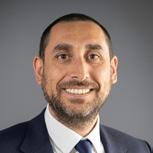
ESG is also referenced fleetingly in the Association for Financial Markets
in Europe (AFME)’s standardised due diligence questionnaire (DDQ). According to Massabni, the ESG questions in the AFME DDQ are mostly high-level and are not aimed at agent banks specifically, but rather on how ESG is applied at a groupwide level.
For instance, Section 3.9 of the AFME DDQ contains a number of questions tackling ESG, including on whether ESG considerations play a role in the client onboarding process and KYC assessments. Additionally, the DDQ asks banks if they – together with their third-party vendorshave any specific due diligence or exclusionary policies when accepting business from specific sectors (i.e. coal, oil, tobacco, etc.).
“Global custodians do not want to suffer the reputational damage of working with an agent bank, which at a group level, might have poor ESG. For example, some global custodians may think twice about appointing an agent bank if its parent company is heavily involved in the financing of controversial weapons,” said Massabni.
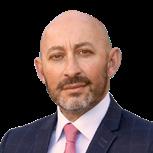
However, ESG is not without its challenges at a network manager level. Firstly, there is a lingering debate about whether network managers have sufficient subject matter knowledge to be quizzing agent banks about ESG. “Everybody – including network managers - are having to upskill as the market changes and evolves. Nonetheless, a lot of network managers are leaning on ESG experts at a corporate level for support,” said Massabni.
A more serious issue facing ESG is regulation. Massabni highlighted a number of global regulators are introducing rules around ESG and sustainability, which is creating complexity for the industry. As these rules are rarely aligned with each other, it means financial institutions often find themselves having to comply with different regulations across multiple markets.
Another problem, continued Massabni, is the absence of standardised ESG data. Today, financial institutions are being overwhelmed with different ESG data standards, which are being

pushed out by an assortment of industry associations, pressure groups and ratings agencies. Without a common ESG data standard, financial institutions are using their own tailored methodologies when measuring ESG, resulting in inconsistencies.
While network managers understand the “G” component of ESG and are slowly getting to grips with the “S” element, Massabni said more work still needs to be done on the “E.” He also noted that firms should concentrate more on biodiversity risk, given how closely intertwined global GDP is with the natural environment.
Although network managers are by no means ESG specialists, this is a subject matter which they are quickly having to familiarise themselves with.
With investors looking for new sources of returns, many are starting to add digital assets – including cryptocurrencies – into their portfolios. Although crypto-currency investing has historically been retail-orientated, institutions, such as hedge funds, are starting to pile in as well. At the same time, larger investors are taking a growing interest in more regulated digital assets, including security tokens.
While the security token market is much smaller than crypto-currencies, experts are anticipating it will increase in size quite significantly over the coming few years. As more clients participate in digital asset markets, banks are having to develop solutions to support them, according to Marochini.
In the case of Societe Generale Securities Services, Marochini said the bank can now act as a recordkeeper, valuator and liability manager for regulated asset managers (i.e. those subject to the Alternative Investment Fund Managers Directive [AIFMD])
trading crypto-currencies. “Most banks do not support clients trading crypto-currencies, so we really are an exception here,” highlighted Marochini.
Other providers are eschewing crypto-currencies but are instead developing digital asset custody capabilities for regulated digital securities only.
Societe Generale has a strong footprint in the world of regulated digital securities. Marochini continued that Societe Generale - FORGE, a fully integrated and regulated subsidiary of Societe Generale group dedicated to digital securities, supports the issuance of digital securities using Blockchain technology.
For example, Societe GeneraleFORGE worked with the European Investment Bank on a €100mn (£85.7mn) digital bond issuance in 2021. More recently, Societe Generale Forge launched EUR CoinVertible, a Euro denominated StableCoin, as the bank continues to bridge the gap between digital and traditional capital markets.
So, what does this mean for network managers?
Just as network managers will review the operations of subcustodians, cash correspondent banks and financial market infrastructures (FMIs), they will need to start incorporating digital asset custodians and other crypto-asset service providers into their due diligence assessments.
This shift towards digital assets will also need to be reflected in the
“Digital asset providers still need to be assessed from a risk management point of view, Network managers will need to evolve their competences, and this will require them to amend their due diligences and ask different questions from what they would a traditional incumbent,” said Marochini.
He continued: “Network managers must ask crypto-asset service providers about what types of cryptoassets they are looking after and the Blockchain protocols which they use. They will need to review their providers’ cyber-security measures and get an understanding of what sort of cryptographic tools they leverage. In light of the FTX episode, network managers will want to see evidence that providers fully segregate client funds from their own and are subject to regulation. And finally, they will want assurances that their providers have sufficient balance sheet capital.”
Appetite for digital assets – despite last year’s crypto-winter – is only moving in one direction. As more digital asset service providers enter the fray, network managers must adapt and modernise their due diligence approaches.
Network management is going through a period of transition amid the rise of ESG and digital assets. Agility and a willingness to embrace change will be vital if network managers are to stay relevant moving forward.
Digital asset providers still need to be assessed from a risk management point of view, Network managers will need to evolve their competences, and this will require them to amend their due diligences and ask different questions from what they would a traditional incumbent
HANDBOOK OF MARKET TRENDS & SUB-CUSTODIAN PERFORMANCE IN EVERY MAJOR MARKET


of the country’s largest banks, Itau Unibanco said it would offer crypto custody services via its cryptocurrency unit called Itau Digital Assets.
Canada – Cross-Border - Unweighted RBC Investor and Treasury Services
Canada – Cross-Border - Weighted RBC Investor
6.30
Canadian exchange TMX Group and Clearstream Banking launched in July 2023 the Canadian Collateral Management Service (CCMS) to bring automation and increase collateral mobility, including the introduction of Canada’s first domestic triparty repo capability.
Brazil’s B3 has signed a multi-year agreement with Nasdaq that will see the US group build a new clearing house for the fast-growing Brazilian exchange. Nasdaq, which supplies technology to over 20 international clearing houses, said in July 2023 it has reached agreement with Sao Paulo-based B3 to develop a new clearing house for the Brazilian stock exchange that covers all the main asset classes including equities and listed derivatives.
France’s BNP Paribas has launched a new artificial intelligence-based service to enable its custody and securities finance clients to access more easily the data they need. The bank’s securities services business said that NextGen Online Assistant will harness the newest cognitive technology of Amelia, which is a trusted partner in enterprise conversation artificial intelligence AI. Institutional clients based in the UK, the US, Jersey, Ireland, Colombia, and Brazil, will be able to use the virtual agent.
Last October, Eurex announced it had begun to trade new FX futures contracts in currencies including the Brazilian real and Mexican peso. The new contracts will be cash settled in US dollars or euros upon expiry. Therefore, clearing members can use their existing infrastructure and will not be required to open new cash accounts in these emerging markets currencies.
Also during the autumn of 2022, one
Canada has said it will move to nextday T+1 settlement on the same day as the US in May 2024, making good on an earlier pledge to ensure consistency between the neighbouring markets.

The Canadian Capital Markets Association said the co-ordination between the US and Canada on the switch to the shorter settlement cycle will reprise the approach in 2017 when both markets moved to T+2 from T+3.
The major industry news out of the north American market was the recent acquisition of RBC Investor & Treasury Services’ European asset servicing activities and its associated Malaysian operation centre by Caceis earlier this year. RBC Investor & Treasury Services (RBC I&TS) itself announced it was rebranding as RBC Investor Services to cater to the Canadian market.
In June, Citi Securities Services was appointed as custodian of international securities for Depósito Central de Valores (DCV), the central securities depositary for Chilean securities. DCV currently holds around $431 billion in domestic assets as part of its central securities depositary activity.
State Street opened an office in Chile in October last year to support the growing number of institutional clients in Latin America. The custodian said in a statement that the new office would focus on custody, fund administration and securities lending, with Alberto Menendez appointed to lead the operation and as sales representative for Chile and Peru.
With more than 1,800 professionals focused on servicing Canadian investors and global investors into Canada, CIBC Mellon delivers on-the-ground execution, expertise and insights to help clients navigate the Canadian market. Leveraging the technology and scale of BNY Mellon, a global leader in investment servicing, and the local presence of CIBC, one of Canada’s leading financial institutions, CIBC Mellon has the experience and the capabilities to help you succeed in Canada.
Canadian custody and sub-custody Brokerage1

Canadian correspondent banking1

Broker-dealer clearing
Securities lending2
Investment fund services









MIS (Workbench, STP scorecard, trade match report card)
Data analytics2

Learn more, contact:
Richard Anton at +1 416 643 5240

Lloyd Sebastian at +1 416 643 5437
Alistair Almeida at +1 416 643 5126
www.cibcmellon.com
©2023 CIBC Mellon. A BNY Mellon and CIBC Joint Venture Company. CIBC Mellon is a licensed user of the CIBC trade-mark and certain BNY Mellon trade-marks, is the corporate brand of CIBC Mellon Trust Company and CIBC Mellon Global Securities Services Company and may be used as a generic term to reference either or both companies. 1 Provided by CIBC 2 Provided by BNY Mellon
dian industry, notably HSBC, JP Morgan, Citi, BNY Mellon, State Street, UBS and Clearstream.

According to DataLend figures, in the equity lending market, North American securities outperformed other regions with an 11% increase in fees, helping to generate an additional $295 million in revenue compared to 2021.


Securities lending will help custodian revenue increase more than two fifths over the next four years to more than $1.8 trillion (£1.5 trillion) at an annual growth rate of 9.4%, according to a new report. The Asset Servicing Global Market Report 2023 predicts that custody revenue will be $1.27tn in 2023 compared to $1.16tn last year, before growing to $1.83tn in 2027. The report suggests that Asia Pacific and the US would be key markets for the top players in the custo-

US derivatives regulator the Commodity Futures Trading Commission (CFTC) has proposed to remove initial margin collateral restrictions on money market funds transferring assets through securities finance transactions. It has recently proposed to eliminate a provision disqualifying the securities issued by certain pooled investment funds, such as money market funds (MMFs), that transfer their assets through securities lending, securities borrowing, repo and reverse repo from being used as eligible initial margin collateral. By removing these restrictions, it will expand the scope of assets that qualify as eligible collateral, said the US government agency.
US exchange Nasdaq has shelved a plan to launch a platform to store digital assets. CEO Adena Friedman, said in the Q2 2023 report the decision was because of US ‘regulatory risks’.

tralia and New Zealand while benefiting local institutions and Tradeweb’s global clients is pending regulatory reviews and is expected to be completed later this year.
Last August, Australia’s financial regulator, the Australian Securities and Investments Commission (ASIC) warned brokers about offering high-risk securities lending to retail investors, reiterating the need for transparency and fair practices. It also advised caution regarding crypto-assets and zero or low-cost brokerage. ASIC has also extended the ban on retail trading in binary options until 2031 to protect investors from significant losses.
More recently, ASIC said it was monitoring the improved plan of the Australian Securities Exchange (ASX) to replace its settlement system following the failure of the original CHESS replacement project last year. ASIC’s chair, Joe Longo, emphasised the need for addressing any gaps or deficiencies before proceeding with the new solution.
In December, Rest Super, an Australian fund, which serves 1.9 million Australians with long-term investment performance, joined the Global Peer Financing Association (GPFA), becoming its 30th member and the third Australian Superannuation participant.
BNP Paribas Securities Services has enhanced its investment compliance screen to include ESG criteria, making it available to funds in New Zealand and Australia, the company stated in May 2023.
A recent Australian Custodial Services Association report has outlined that US lender J.P. Morgan had reached AUD$1 trillion of assets under custody in Australia in the second half of 2022, the first lender to reach that level.
Tradeweb Markets’ acquisition of Yieldbroker for A$125mn (£65mn) to upgrade fixed income markets in Aus-
The People’s Bank of China, alongside the Hong Kong Monetary Authority and the Securities and Futures Commission launched in May 2023 the northbound trading under the mutual access arrangement between the Mainland and Hong Kong interest rate swap markets (the so-called Swap Connect programme). The Swap Connect allows overseas investors to participate in China’s OTC derivatives market.
The Japan Exchange Group (JPX) signed a memorandum of understanding with the China Financial Futures Exchange (CFFEX) to promote derivatives listed on both exchanges, enhancing collaboration between the two regions last September. Another collaboration has seen the China Foreign Exchange Trading System and Clearstream conduct the first-ever Chinese triparty repo transactions using non-Chinese ESG bonds as collateral.
In July, Hong Kong and China’s central banks were discussing allowing repo transactions on the Bond Connect platform, potentially increasing liquidity for yuan bonds held by offshore investors. This move follows the launch of Swap Connect, connecting China and Hong Kong’s interest rate derivative markets.

Hong Kong Exchanges and Clearing (HKEX) recently introduced options on its Hang Seng TECH index futures due to increased popularity. The exchange is also planning to expand its Chinese rates product suite and launch Chinese government bond futures through the Swap Connect project.
As a first step towards emissions trading, HKEX is focusing on voluntary carbon products and has established the Hong Kong International Carbon Market Council to help create an international carbon market. HKEX has launched a marketplace called Core Climate in an attempt to develop regional carbon markets by enabling trade and settlement of voluntary carbon credits from both certified and verified projects. Future plans include expanding further to advance the move to Net Zero and climate related issues in mainland China.
On the industry side, Citi Securities Services launched a proprietary technology to improve settlement for Hong Kong-based trades, enhancing flexibility and efficiency for clients in June. The US bank hopes to increase the liquidity of yuan bonds, as central banks in Hong Kong and China are discussing plans to grow Bond Connect by potentially allowing investors to trade repo transactions.
Northern Trust promoted the head of its Asian asset management arm to run the US group’s business in Hong Kong, a move designed to foster innovation and collaboration in the world’s fastest growing economic region. Benze Lam has been promoted to a new role as head of Northern Trust’s Hong Kong arm in
addition to his existing role as head of Asia (ex Japan) for Northern Trust Asset Management. Fellow US bank BNY Mellon saw Tony Smith depart from his senior position as director of governance and control within the Clearance and Collateral Management division. It also appointed Francis Giglio as Hong Kong chief executive earlier this summer.
cess to India’s commodity derivatives market to international firms with foreign portfolio investors being able to have direct market access through regulated exchanges without manual broker intervention, enhancing order control and execution speed.
pan and the Tokyo Stock Exchange partnered to provide an end-to-end proxy voting service for Japanese investors.
JPX launched small size equities and short-term interest rates futures in May 2023, while Japan Securities Clearing adopted blockchain technology for settling rubber futures, with the most liquid contracts shuffling from paper to tokenised transfers using blockchain.
The European Energy Exchange launched new short-term Japanese power contracts to meet growing demand, while the JPX’s Osaka Exchange plans to introduce cross margining of interest rate swaps against correlated rates futures.
In June, Fujitsu announced the launch a blockchain-based platform for crossborder securities settlement in the Asia Pacific region.
At the start of 2023, the National Stock Exchange of India (NSE) converted to T+1 settlement becoming the first major economy to do so. The shift is expected to lower counterparty risk and improve market liquidity.
The Reserve Bank of India (RBI) hopes to boost the domestic bond market by allowing the lending and borrowing of government securities. The Indian regulator, the Securities and Exchange Board of India (SEBI), is also planning to level the playing field by allowing institutional investors to short-sell Indian stocks, ensuring equal leveraging opportunities as per announcements in February. In an attempt to uplift the domestic corporate bond market, SEBI has also allowed mutual funds to invest in repo transaction involving corporate debt securities rated AA and above, such as commercial papers and certificate of deposits, effective June 2023.
The Singapore Exchange and the NSE introduced in April the NSE IFSC-SGX Connect to combine liquidity pools for Nifty products. The initiative has seen increased trading in SGX’s Indian Nifty 50 Index Futures, facilitating the trading and clearing of Nifty equity derivatives.
In May 2023, SEBI allowed better ac-
The Japan Exchange Group (JPX) signed a deal with China Financial Futures Exchange in September 2022 to improve liquidity in ETFs listed under the JapanChina ETF Connectivity scheme.
The Bank of Japan’s relaxation of terms for securities lending has been welcomed by the national securities lending trade body. The aim of this move is to address stability concerns amid excessive tightening in supply and demand for Japanese government securities in the repo market as of last December.
Japanese tech provider SBI Holdings and Cboe Global Market partnered to develop local equities and digital finance offerings last October. In an attempt to promote sustainability for their clients, Mizuho Financial Group and the London Stock Exchange Group have joined forces to enhance their ESG capabilities.
In April 2023, Broadridge Financial Solutions, Investor Communications Ja-
The European Securities and Markets Authority (ESMA) recognised Bursa Malaysia Derivatives Clearing as a third-country central clearing counterparty last November, granting it the ability to offer clearing services to EU members. In July this year, Bursa Malaysia lowered the daily market capitalisation requirement and added 177 new approved securities for short selling, securities borrowing, and lending transactions to enhance portfolio management for investors while increasing activity in securities borrowing and lending.
In December 2022, the Securities Commission of Malaysia said it would proceed with its proposed sustainable and responsible investment taxonomy (SRI Taxonomy) with the aim of standardising and facilitating the comparison of ESG assets in the Asian market.
BNY Mellon expanded its collateral and clearance management platform to
With our global presence and local expertise, we work side by side with you as your committed financial services partner to deliver a world of opportunity.

include Malaysia as its next market in February 2023.
In July, France’s Caceis completed the acquisition of RBC Investor Services’ European business and Malaysian centre of excellence to strengthen their position as a leading European asset servicer and expand its offering to clients.
successfully started trading equities, derivatives, and other instruments on the SGX exchange and Matrixport announced its partnership with Copper.co for collateral management.
Later in the year, BNY Mellon appointed Winnie Chen as Singapore chief executive, to drive growth in Singapore. She will combine her new responsibilities with her current role as Asia Pacific head of treasury services.
In the autumn of 2022, the Union Bank of the Philippines said it was using asset management technology provider METACO’s custody and orchestration platform Harmonize to pilot crypto services for its clients. Following the trial, UnionBank plans to allow clients to custody and exchange digital assets via its mobile banking app.
Last August, Huobi Global, a cryptocurrency exchange, revealed the suspension of its derivatives trading services to users in New Zealand not long after it expanded its operations to the country. US financial technology company Envestnet, which has $5 trillion in assets under advisement, said it would team up with FNZ to enter the New Zealand custody business last October. The partnership is expected to launch in the second half of 2023, allowing Envestnet to expand its asset management services to FNZ clients outside the US.
In May 2023, BNP Paribas Securities Services upgraded its investment compliance screen solution to now includes a range of ESG criteria for funds in New Zealand and Australia.
In June 2023, HSBC announced that it would gradually close its wealth and personal banking operations in New Zealand due to changing market conditions and restricted scalability as a result of its strategic review.
Apex Group has appointed Anthony Edmonds as country head for New Zealand. The appointment follows Apex’s acquisitions of Implemented Investments Solutions, founded by Edmonds, InvestNow and investment administration firm MMC in 2022.
In June 2023, the Securities Clearing Corporation of the Philippines officially declared its intention to move to a T+2 settlement cycle for equities starting August 2023, with settlement scheduled for later in the month.
In September 2022, the Singapore Exchange (SGX) launched a new FX venue offering liquidity for spot, precious metals and non-deliverable forwards (NDFs) called SGX Currency Node. SGX has also teamed up with BNP Paribas and Deutsche Bank as the central prime brokers and has plans to add FX swaps and NDF spreads later.
In October 2022, DBS Bank became the first direct clearing member for LCH’s SwapClear in Singapore, while SGX finalised a deal with MSCI to create derivatives linked to its Climate Action Indexes.
In March 2023, Horizon Software

one-quarter was managed on behalf of foreign customers. The share of AUM for pension funds dropped by 13.29% to €27.53 billion, driven by ‘negative investment results of the underlying securities during 2022’.
The Austrian fund industry had €200.2bn of assets under management by the end of 2022, a 13% drop on the previous year, according to figures reported by Vereinigung österreichischer Investmentgesellschaften (Austrian association of investment companies). Of these, pension funds had AuM of €24.3 billion by the end of Q4 of 2022, a 10% drop year-on-year off the back of global economic uncertainty.
In market news, Broadridge launched the Austrian edition of its “market golden copy” event sourcing and proxy vote execution service for banks, brokers and wealth managers in October 2022.
On the people front, BNP Paribas’s Securities Services elevated Pauline Bernard as its new regional head of France and Belgium, in June, while at Euronext, Benoît van den Hove was promoted as the new CEO and chairman of Euronext Brussels, replacing Vincent Van Dessel who is set to leave by the end of 2023.
In June 2023, Belgium’s financial markets watchdog, the Financial Services and Markets Authority, has ordered Binance, a cryptocurrency exchange, to stop its offering of a digital asset exchange and custody services.
According to figures from the Belgian Asset Managers Association (BEAMA), total asset management assets in the country dropped by 12.3% in 2022 to reach €365.44 billion. Of this amount,


Data from S&P Global Market Intelligence shows that EMEA securities finance revenues increased 23% YoY in April 2023, with the ‘Nordics remained popular countries amongst borrowers with stronger revenues when compared with April 2022. Denmark and Finland witnessed increases of +50%’. The country’s largest pension fund reported a 40.9% drop in investment return for 2022, because of ongoing uncertainty and market conditions. IT said in a report earlier this year that its assets fell 28% at the end of December 2022 to DK678 billion ($97.4 billion).



























France - Cross-Border - Unweighted
BNP Paribas Securities Services 6.12
France - Cross-Border - Weighted
BNP Paribas Securities Services 5.30
France – Domestic - Unweighted CACEIS BANK 5.78
The French market has been kept busy in the past year.
Most recently, LCH RepoClear has merged its RepoClear euro debt service, which includes specials and general collateral, with its €GCPlus service. The Paris-based clearing house will combine its €GCPlus liquidity with the €3.3 trillion RepoClear liquidity pool to unlock additional netting opportunities for members.
French asset servicer CACEIS has registered as a digital asset service provider with the financial regulator to provide custody services for digital assets including cryptocurrencies. It also acquired Royal Bank of Canada (RBC) Investor Services’ European asset servicing activities and its associated Malaysian operation centre. Caceis said it is strengthening its position in European asset servicing.
For its part, Société Générale, one of the largest investment banks in Europe, said that it would be expanding its cryptocurrency asset management services through its Security Services subsidiary. Clients who are digital asset fund managers can now elect to have Société Générale as their fund custodian, valuator and liability manager.
BNP Paribas Securities Services has appointed ex- Société Générale Corporate and Investment Banking equity finance sales specialist Nessim Medjkoune to the firm’s triparty collateral management sales team. The French lender also named a new regional head of France and Belgium for securities services business. Pauline Bernard, previously the bank’s Head of Sales for Institutional Investors for Continental Europe, took up the role in June.
Germany - Cross-Border - Unweighted
BNP Paribas Securities Services 5.88
Another European market, Germany, has moved at a steady clip.
HSBC appointed Daniel Brueckner permanently as head of securities services, Germany, in March, while State Street added Dr. Andreas Przewloka as executive vice president and chief executive officer for State Street Bank International GmbH effective 1 January 2023. Przewloka will also serve as State Street’s Germany country head.

In industry news, Clearstream went live last autumn with its first digital securities issuance in Germany by launching a digital instrument on Deutsche Borse’s D7 post-trade platform. The securities settlement company said it would provide a digital alternative to conventional physical issuances for about 80% of German securities. German lender DZ Bank, part of the Volksbanken Raiffeisenbanken group, has agreed with fintech Metaco to support its crypto offering to institutional clients. Germany’s Dekabank, which has some €360bn of assets under management, signed a similar agreement with Metaco at the end of January this year.
Ireland is now the top destination for exchange traded funds in Europe, surpassing Luxembourg, with nearly twothirds of these assets (worth €939bn as of the end of January 2023), according to Morningstar data. Luxembourg trails behind with €276bn, and a 20% share.
Apex Group said in April it will buy several MJ Hudson business including ESG solutions, management company services, quantitative solutions, investment advisory, custodian bank benchmarking, Channel Islands fiduciary and fund administration. MJ Hudson’s management company services in Ireland and Luxembourg will add approximately €80bn of assets under management Apex Group existing European offering.
Fund administrator Aztec Group has established a presence in Ireland, following the appointment of Head of Ireland Fund Services, Kevin Hogan, in the summer of 2022. He was previously managing director, head of product, alternatives EMEA at State Street.
The Central Bank of Ireland awarded Coinbase a licence in December 2022 to act as a virtual asset service provider providing crypto trading and custody in the country. The Nasdaq-listed crypto exchange operator is the second to be handed down this licence, after crypto exchange Gemini stepped in in October. Several other entities have since followed suit, including Kraken in April this year.
On the people move front, HSBC has added Paul Ellis as global product head of its securities services division, based in Ireland, to manage regulation,
tax, trustee, and depositary services. French lender BNP Paribas appointed Joy Kiely as head of Ireland for securities services in May this year. She was previously head of client development Ireland.
Europe’s Euronext Clearing appointed Roberto Pecora as its new chief executive and general manager in May 2023. Pecora joins from Société Générale, where he was CEO and general manager of SGSS Spa, the Italian securities services arm of the French lender. SGSS announced shortly after that Valeria Dal Corso had been added as chief executive officer and general manager of SGSS S.p.A. and country head of SGSS in Italy.
Clearstream has been selected by Italian online broker Directa to provide investors with access to its global funds portfolio. Clients will be able to access Clearstream’s funds suite of more than 190,000 international funds in 50 jurisdictions globally. CACEIS Bank Italy will act as local paying agent, ensuring communication with transfer agents via Clearstream’s cross-border fund processing platform, Vestima.
business Vestima, providing access to more than 230,000 funds in over 50 markets. In May, Proxymity, a provider of digital investor communication, and Clearstream, have created a digital general meeting announcement solution, for issuers and issuer agents in Germany and Luxembourg to cover all asset classes.
Luxembourg - Cross-Border - Weighted
After reaching a high of €5.86trn in 2021, the Luxembourg fund industry ended dropped just over 14% in 2022 with €5.028trn in assets under management, according to figures from Luxembourg’s financial regulator.
Martin Wallmann has returned to J.P. Morgan as head of securities services and branch manager for Luxembourg, after a stint at Clearwater Analytics, where he was head of the DACH region (Germany, Austria and Switzerland).
Arnaud Jacquemin, head of Societe Generale Securities Services’ (SGSS) Luxembourg business, has replaced David Abitbol, as head of SGSS as of 1 July. Abitbol, who has led SGSS since January 2019, is now the French bank’s head of global transaction & payment services.
The US’ BNY Mellon appointed Brenda Bol last summer as branch manager, Luxembourg and head of investment managers EMEA asset servicing and digital, from Brown Brothers Harriman. The role was previously held by David Claus, who left to become CEO at European Depositary Bank.
Deutsche Boerse-backed Clearstream, which provides post-trading services, has established a new banking institution in Luxembourg for serving institutional fund investors. The new bank Clearstream Fund Centre S.A. will serve Clearstream’s fund execution
The Dutch central bank, De Nederlandsche Bank, has asked national pension funds to consider boosting ‘holdings of cash and other liquid assets’ to prevent a local version of the UK mini-budget crisis in early 2023, the FT reported. There was €2.08trn in assets under management in the Netherlands in 2021, which amounts to roughly 6.5% of the European market. Dutch pension funds managed some €1.5trn in assets in the first quarter of 2023, up 2% on the previous quarter, according to figures from the country’s central bank.
Norges Bank Investment Management (NBIM), which manages NKK 12.72 trillion ($1.28 trillion) on behalf of the Government Pension Fund Global, unveiled its latest investment strategy covering 2023 to 2025 in December 2022. In the plan, it said it would take a
‘contrarian approach that will capitalise on periods of volatility’ and will use active management to exploit periods when it believes ‘variations in asset prices are excessive’.
In a conference in December, CEO Nicolai Tangen said the fund would also ‘become a more vocal shareholder and plans to vote against companies that fail to set a net zero emissions target, overpay their top leaders, or do not have sufficiently diverse boards’.
Romania - Cross-Border - Unweighted
Swiss exchange is offering clients and prospects a direct market access to the Spanish Central Securities Depository, Iberclear, since October 2022. The move follows its acquisition of BME Group, the Spanish stock exchange, a couple of years earlier.

The European Central Bank (ECB) has extended its temporary repo lines with a number of non-euro central banks to 15 January 2024, including with the National Bank of Romania (Banca Naţională a României). This would allow the bank, and some of its other EU counterparts in Albania and Hungary to borrow euros up to a specified limit in exchange for its own currency, provided as collateral.
Jesus Benito, SIX’s head domestic custody operations said: ‘The new direct market access is developed to protect a broad range of asset classes, combining the Swiss and Spanish securities services expertise of SIX. Our best-in-class market access models, combined with its growing international presence, are the basis for flexible end-to-end securities services.’
BNY Mellon opened a new branch in Poland in April 2023, with Ewa Carr-de Avelon becoming branch manager and continuing in her role as Poland country manager, a position she has held since joining BNY Mellon in 2019. Euroclear added a further 400 staff at its Krakow facility, with the creation of a new Tech hub. It said in a statement in May the move was part of an ongoing strategy to grow and invest in critical capabilities such as data, digitalisation, and cyber, while also reinforcing the client-facing, support and control functions. Andrzej Mikolajczak has been named as the local branch manager.
In January this year, Sweden’s Financial Conduct Authority (Finansinspektionen) went live with its short selling online reporting tool, to track the reporting of net short positions. This system replaces the previous email-based reporting system.
In March 2023, Citi Securities Services said that Nordnet was the first Swedish client to start lending through its Citi Securities Lending Access platform, which will extend its securities lending programme to new markets and client segments.
According to data from IHS Markit, Sweden was the ‘third most profitable market in Europe for lenders generating $108m in revenues,’ in the second half of 2022, with real estate and media and entertainment stocks the focus of borrowers in this market.
In February this year, Switzerland’s central bank (SNB) has accepted a digital native bond issued by the city of Lugano as eligible collateral for its own repos for the first time. The bond is the first digital native asset accepted as eligible collateral for SNB in the General Collateral Basket.

“I see this as an important signal to market participants that digital bonds have not only arrived in the domestic CHF bond market, but have established themselves as an integral part of the capital market value chain in Switzerland,” Alexandre Kech, Head Digital Securities at SIX SDX, where the bond was listed.
The digital exchange was also in the news last summer as it tokenised equity shares in a fully-regulated central securities depository based on distributed ledger technology. The shares belong to F10, a global fintech company.
The biggest news in this European market this year was the announcement of Credit Suisse’s takeover by fellow Swiss lender UBS for over $2bn, after the bank was found to have ‘material weaknesses’ in financial reporting.
of 2022 it was proposing changes to its rules on short selling activity. It said this could change requirements relating to short positions in sovereign debt securities or sovereign credit default swap (CDS) contracts. The review is part of the government’s aim to shape the UK’s own policies after the country’s exit from the European Union.
In June, the Bank of England (BoE) launched its first financial market stress test covering both banks and non-bank firms such as hedge funds and pension funds. The move is designed to test how resilient the UK market is to shock events, and how various financial firms might amplify their effects. The Bank said it has widened the existing stress test exercises after the Covid market disruption in March 2020 and the more recent mini-budget crisis in September last year showed a need for a more comprehensive assessment.

The UK’s central bank was one of many to put interest rates up in the past year to try to curb inflationary pressures. In addition, ‘political uncertainty in the UK sparked a sell off in UK Gilts and the simultaneous talk of the increasing likelihood of a recession and central bank balance sheet reduction spooked investors,’ reports IHS Markit.
The country was fourth in terms of securities finance revenues from equities generated in the second half of 2022, at $75 million, behind Germany, France and Sweden, up 15% year-on-year.
The UK government has also been in the news after announcing at the end
The BoE also announced in July a proposed increase in the fees it charges clearing houses and settlement depositories (CSD), citing costs related to the regulator’s wider role post-Brexit. The central bank published the proposed fee regime for the 2023/2024 year for financial market infrastructures – which includes clearing houses and central securities depositories. The regulator said it expects to recoup £2.85 million from each home regulated “category 1” central counterparty and £1.38 million from CSDs next year, representing a 5% and 4% increase respectively for each segment. In total the Bank of England expects to gather around £12.8 million from the exercise, compared to costs in the period of £13.8 million for its supervisory and policy activities, it says.

Bahrain Clear and Bahrain Bourse expressed its intention to attract foreign investments and harbour relationships with global fund and asset managers during the HSBC MENA Markets and Securities Services Forum 2023 held in March.

In early July 2023, SICO’s CEO, Najla Al Shirawi and Northern Trust’s EVP and President – EMEA, Teresa Parker signed an agreement to fortify asset management services and encourage investment opportunities in the Gulf country markets during the official visit of the Crown Prince and Prime Minister of Bahrain to the UK. The objective is to generate fresh opportunities and enhance securities and financial asset management services, while simultaneously granting investors entry to GCC markets through this collaboration.
rating, attract international investors, and promote inclusive growth while advancing green and social objectives.
Egypt’s finance and fintech sectors saw significant deals including an agreement between the Central Bank of Nigeria (CBN) and the Central Bank of Egypt to boost innovation via increased cross-border trading in early July 2023.
“We look forward to cultivating an innovative space for fintech startups and entrepreneurs in Egypt and Nigeria to accelerate financial inclusion, deepen our payment systems and drive economic growth across the African Continent,” says Aishah Ahmad, CBN Deputy Governor for Financial System Stability.
The Liquidity and Sustainability Facility, developed by the United National Economic Commission for Africa and African Export-Import Bank completed its first repo transaction, worth $100mn, in November 2022. This aims to enhance the liquidity of sovereign eurobonds, with issuers including Egypt and Kenya, and to encourage investments related to the UN’s Sustainable Development Goals in Africa.
In May 2023, the African Development Bank Group approved a $345mn Partial Credit Guarantee for Egypt to access the Panda bond market and finance green and social projects. This guarantee allows Egypt to raise up to $500mn in Chinese yuan-denominated Panda bonds, supporting sustainable initiatives in various sectors. The project aims to enhance Egypt’s credit
In late November 2022, SecondSTAX launched an order management and execution routing system for investment firms, SecondSTAX Portal, in Kenya and Ghana to give institutional investors across Africa easy and direct investment to the Ghana Stock Exchange (GSE) and the Nairobi Securities Exchange.
Ekow Afedzie, GSE’s Managing Director, said: ‘The SecondSTAX portal is a timely innovative tool at a time that African markets are accelerating efforts to integrate and foster crossborder trading. Partnering with fintechs to develop innovative digital products and opening our markets to international businesses and investors via technology is a key pillar in GSE’s 3-year strategic plan.”
At the end of 2022 (December), the Ghana’s Ministry of Finance (MoF) declared the suspension of all debt service payments for certain categories of the country’s external debts, including payments on eurobonds, commercial term loans, and most bilateral debts.
The Central Bank of Kenya has upgraded its Kenya Electronic Payment and Settlement System by endorsing new ISO standards. According to reports earlier this year, the bank expects to improve the exchange of financial messages by inlaying richer data on the transfers as well as enhancing the accuracy of vetting trading parties.
The Nigerian Exchange Group (NGX) announced it was working with stakeholders to improve securities lending transactions and create a more efficient and liquid market for investors. Jude Chiemeka, the divisional head of capital markets at NGX, emphasised the global significance of securities lending in modern capital markets. The NGX’s primary goal is to contribute to the development of the capital market in Nigeria and Africa by promoting liquidity and facilitating price discovery.
FSDH Merchant Bank launched custody services for investors in October 2022, as a part of its commitment towards continuing to deliver financial and investment solutions for both pre-
and post- trading services.
The Nigerian Senate passed the Investments and Securities Bill 2023 into law in April, providing a significant boost to the country’s capital markets. The Bill’s main objectives are to improve market functioning and safeguard investors, and it also introduces regulations for various aspects such as investments, derivatives, risk management, and financial infrastructure.
SNB Capital partnered with Broadridge to start offering securities lending and borrowing services in earlier this year.
In March 2023, Riyad Capital collaborated with BNP Paribas Securities Services to launch My Assets, a web-based client portal for securities services., while J.P. Morgan planned to expand operations in Saudi Arabia, tapping into the country’s growing equity capital markets.
In June 2023, Saudi Arabia’s financial market climbed seven places to rank third among G20 nations in competitiveness, thanks to the Capital Market Authority’s implementation of global best practices. It also secured the third position globally in the stock market capitalisation index, outperforming advanced nations.

In December 2022, the Tadawul introduced a market making framework for the equity and derivatives markets to increase liquidity and better price formation efficiency to try to attract more investors and issuers to the exchange.
South Africa’s market has seen growth and development over the last year.
In November 2022, the International Capital Market Association (ICMA) revealed a scholarship programme to countries including South Africa to further financial services education.
In December, the African Exchanges Linkage Project (AELP) launched, connecting seven African stock exchanges,














African capital markets are rich in investment opportunities. Navigating the culturally diverse markets is not without complexity though. That’s why you need a partner with insightful experience and vast coverage of the continent. As Africa’s largest custodian, by assets under custody, market coverage and investment solutions, we are uniquely positioned to partner you in navigating this continent, so rich in opportunity and potential.


That’s why Standard Bank is your leading African bank for banks. Find out more about our Investor Services at www.standardbank.com/cib

Standard Bank has been in the Investor Services business, starting with custody, since the establishment of the Johannesburg Stock Exchange in 1887. Over time we have built a welldiversified client business, with a healthy balance between local and foreign clients. South Africa is our hub when offering a regional custody service. This allows clients to contract and interact only with the Standard Bank South Africa team.
Llewellyn Ford, Head of Investor Services, Standard Bankincluding that in South Africa, to advance cross-border trading and settlement, and create a pan-African stock exchange able to conduct business on an African scale.
Around the same time as AELP’s launch, Broadridge and South Africa’s settlement depository and collateral service, Strate, partnered to offer an end-to-end proxy voting service to enhance compliance under South Africa’s Companies Act by streamlining proxy voting processes. This service is part of Broadridge’s Direct Market Solutions product suite and will allow the companies clients to use the digital voting service, provide real time notifications and give access to an extend voting window whilst also enhancing transparency.
In January 2023, Apex acquired fund services and third-party management company Maitland Group, with plans to expand their solutions globally and hire experts in Johannesburg. The addition of Maitland will expand Apex Group’s existing presence in the UK, Guernsey and Luxembourg and will grow its recently established footprint in South Africa.
storage of securities, efficient cash management, and smooth trade settlement.
In April 2023, the Abu Dhabi Securities Exchange (ADX) partnered with Mashreq to provide digitalised trading access, enhancing opportunities in the Gulf region. ADX also introduced five new single stock futures to boost its derivatives market, doubling the number of traded derivatives in a year.
Standard Chartered signed a memorandum of understanding with Dubai International Financial Centre (DIFC) to collaborate on digital assets, including digital asset custody, in early May. Subject to regulatory approval, the bank plans to launch digital asset custody services in DIFC, catering to institutional clients globally.
NBD Capital PSC was accepted as a custody services provider on both the Dubai Financial Market (DFM) and Nasdaq Dubai during March 2023. This development in securities custody offerings is in line with Dubai’s economic agenda and offers clients advantages such as secure
In mid-July 2023, HSBC helped enable short selling in the UAE after completing its first securities lending and borrowing transaction on the DFM resulting in more attention from international investors. Last August, HSBC also received an arranging custody license in Abu Dhabi which allows global securities services coverages in the UAE market to its clients.

The Securities and Exchange Commission approved on February 15 rule changes to shorten the US settlement cycle for most broker-dealer transactions to next-day, T+1 settlement. The US securities regulator said at that time the
compliance date for the final rules, which will “benefit investors and reduce the credit, market, and liquidity risks in securities transactions”, is May 28 2024.
Since the SEC announcement, firms have been keen to outline their thoughts on the impact of
Published 06 Apr 2023
The US transition to next-day T+1 settlement comprises four key challenges for firms, the main US clearing and settlement provider has said.
The Depository Trust and Clearing Corporation, which operates the US equity clearing house and depository, said the US migration to T+1 from its current T+2 standard, due to take place in May 2024, represents a significant undertaking for firms.
The New York-based DTCC said the switch to next-day settlement can be broken down into four key challenges: emphasising straight-through processing (STP); global impact; buyside record-keeping; and key timing changes.
Robert Cavallo, director of DTCC Clearance and Settlement Product Management, said: “When the industry moved to T+2 in 2017, many firms needed to add resources to support the transition. However, the move to T+1 is fundamentally different — and technologically and behavioural
changes must be the goal to ensure success.”
The DTCC said that US regulator the Securities and Exchange Commission is stressing the importance of sameday trade affirmation as a prerequisite to T+1 settlement which requires firms to invest in their STP solutions.
One key issue with US T+1 is what it means for European and Asian firms trading US markets.
The DTCC said: “Removing the only day to resolve exceptions requires firms in these locations to have a nuanced approach and possibly implementing a “follow the sun model,” if applicable.”
The US post-trade giant also said in its commentary that buy-side firms need to upgrade their recordkeeping to reflect an amendment that requires investment advisors to log confirmations and affirmations.
Finally, the DTCC said best practice guidelines dictate affirmations need to be processed by 9pm Eastern Time on the day of trade to ensure settlement on T+1, which will also require firms to check their internal processes can meet this requirement.
the regulatory change and what firms need to think about as they forge ahead with their migration projects.
Published 12 Apr 2023
The US migration to next-day T+1 settlement cycle may pose potential challenges around collateral and recalls, a senior manager at EquiLend has suggested.
Speaking to Global Investor Group, Mike Norwood, director, global trading product owner at EquiLend, considered the impact on collateral and recalls with the upcoming T+1 settlement implementation on May 28 2024.
Mike Norwood, director, global trading product owner at EquiLend, said: “I think automation enables us to accelerate the settlement timeframe. I think where it starts to put stress on an organisation is when you look at the interplay between trading and posttrade.”
Norwood continued: “If you’re going to settle something on a T+0 or T+1 basis, you must make sure that your collateral is being received in a timelier manner so that you’re able to plug that information into your triparty agent or
Here is a selection of articles from GlobalInvestorGroup.com on the responses to the SEC announcement. Continued
> Continued from page 73
into your cash management system to make sure that collateral is received. After that, the trades are released and then you have received efficient settlement.”
The EquiLend trading product manager said the shorter settlement cycle will also pose issues around recalls.
He continued: “The flip-side then is that there’s the recall and return process. Now across the industry, how fast lenders are receiving recall notifications really matters and how quickly they’re able to deliver those to the market requires investments in technology.”
Norwood said: “Regulation is not a bad thing. I think it creates a more efficient market. I believe thoughtful and insightful regulation can be a boon. We’ve seen better settlement rates because of CSDR.”
Europe’s Central Securities Depository Regulation (CSDR), which took effect in February last year, was the European Union’s bid to improve settlement rates across the bloc.
“The Securities Financing Transactions Regulation (SFTR) was a challenge for the industry to comply with as it was a lot of data and required a lot of investment in terms of infrastructure, but ultimately it brings more transparency and a better data model. CSDR requires that people have a better technological footprint to make sure that their processes are efficient and accurate.”
Norwood added: “But again, it’s really on a case-by-case basis. You must evaluate what the impact is going to be in the state of the industry and its ability to comply. It can introduce extra costs and people must dedicate resources on the technology and product side to make sure they’re fully understanding what the implications of that regulation are and that they’ve got a suitable product suite that allows them to comply with it.”
Published
The US migration to T+1 has highlighted the industry’s heavy reliance on legacy systems, some of which were built more than 50 years ago, a technologist has suggested.
John Oleon, managing director of Clearing and Settlement Operations at Clear Street, said the US shift to T+1 on May 28 2024 presents significant challenges to large firms.
Oleon said: “Much of the industry is on systems that were built in the 1960s, on COBOL and mainframe back-office systems, which are incredibly resilient. They do a lot of volume, and are very difficult and very expensive to change.”
COBOL, known as Common Business Oriented Language, is a domain-specific, computer programming language used in many financial institutions such as banks, governments and insurance firms.
He continued: “Firms that rely on COBOL can spend hundreds of millions of dollars every year just to keep the systems alive. Now, they are currently trying to get their system to move into the cloud to accommodate T+1. For many firms, replacing these antiquated systems would be like removing the engine from a plane in mid-air. It’s timeconsuming and difficult to execute with fragmented technology.”
Oleon said that Clear Street, by contrast, is using modern technology, so T+1 compliance is a matter of making a few adjustments and it will have no financial impact on the firm.
“SEC’s T+1 deadline means that
all of these systems, vendors, backoffice systems that run on COBOL are simply going to struggle to make the deadline,” said Oleon.
The senior executive believes the shift to T+1 will have serious implications for the securities lending industry.
“If you take out the technology aspect - recalls, borrowing, getting ahead of 204 SEC regulation to close out short sales here in the United States have very stringent regulations, so it’s going to be very difficult.”
Oleon said the US currently settles on T+2 while the 204 regulation has a period from T+3 up to T+35 to cover fails and make deliveries. T+1 will reduce the window for settlement by 24 hours. “That doesn’t sound like a big deal, but it is an incredibly big deal for stock loan.”
Oleon added: “Things need to happen faster and when you have counterparties that are overseas or that use a custodian, this can be challenging. Hedge funds use custodians, and mutual funds use custodians. In a T+2 environment the struggle is already prevalent, but a T+1 environment removes any kind cushion we had from a timing perspective.”
He added: “With a T+1 deadline there needs to be more transparency into what’s happening day-today that can’t be done with batch processing, or by manual data-entry. That information needs to be at security finance traders’ fingertips so they can act for both clients and their own level of risk, making sure they know where they stand at all in real-time.”
Published 16 May 2023
Europe should move T+1 to avoid a regional competitive disadvantage to the US which is switching to the shorter settlement cycle next year, a report has suggested.
Dutch market-maker Optiver published in May a report titled, ‘T+1: The case for one-day settlement in Europe’, which encourages Europe to follow the US lead on T+1 while cautioning there are certain complexities to ‘iron out’.
Amsterdam-based Optiver said Europe should move to T+1 to avoid a competitive disadvantage vis-a-vis the US if it fails to migrate.
In the report, Optiver said a shorter settlement period will reduce the risks to the financial system, partly by cutting the time in which a trading counterparty might default.
The report also said the shorter settlement period will decrease the time firms need to hold capital and post-margin at clearing houses to cover open exposures. Also, the reduced capital burden may free-up cash to help firms in volatile periods.
The move to T+1 will reduce risks overall, but it will not dispose of them completely as a shorter settlement window gives market users less time to resolve issues that may arise, the report notes.
The report also suggests solutions to imminent challenges the EU market will face with the migration. The report suggests that EU authorities promote transparency and comprehensive planning for the migration, which means coordinating across multiple national clearing houses and central securities depositories that operate across the region, said Optiver.
Published 17 Apr 2023
The US’ shift from T+2 to a next day T+1 settlement cycle poses two main concerns for EU markets, a senior regulatory policy adviser at the European Fund and Asset Management Association (EFAMA) has told Global Investor.
EFAMA’s Susan Yavari said that the US move to T+1 could mean a misalignment of settlement cycles and FX funding.
“You have the US buyside, the US sellside and the Depository Trust & Clearing Corporation: all these players were involved in pushing through the US move to T+1, but at no point were international investors consulted and some of our associations were not really consulted. We didn’t fit into that process,” Yavari said.
Yavari said with European funds, firms are in a “scramble mode” as they think about how to cover the mismatches they will encounter. EU firms will remain on T+2 or T+3 cycles.
“Our funds will keep settling over a two- or three-day period, whereas the US securities that we hold will move to T+1 settlement,” she said. “When our EU funds are included in a basket of US securities, these will have to be settled in
one day. But this also means a few things; cash flows could go into a fund a day early, so we would have cash breaches, for example. It’s not a good thing for a fund to have too much cash because it raises regulatory obligations and you would have a breach, so you must report it.”
Yavari continued: “On the other end, you could also have overdraft, so cash shortage, where we’re short on cash and must settle the US security, but the EU investor hasn’t paid in yet, for example. This misalignment of settlement cycles will be problematic to manage.”
Addressing the other critical factor of FX funding, Yavari explains: “As we’re looking to match trades settled in one day, we’re also having to secure the FX funding in that time window, particularly for trades coming in later in the day. For example, if you’re trading at 3pm, you only have about two hours to secure the FX before 5pm in the US where you can access the funding.”
“It raises all sorts of questions about where we’re accessing the funding and where we’re setting up operations if we continue to cover everything from the EU or whether to have more staffing in the US.”
The implementation of next-day, T+1 settlement in the US will lead to a spike in fails which will require firms to address their exception management processes, an expert has said.
Daniel Carpenter, chief executive at Meritsoft (a Cognizant company), said: “One of the issues banks will face under T+1 is how to consolidate and normalise their settlement fails into one place so that any associated costs can be accurately reconciled.”
“The questions firms are now asking
are: How do we allocate who’s at fault? Why did it fail? Who missed the mark? That’s all part of Meritisoft’s initial CSDR solution, which we’re now building on to help firms understand where remediation efforts should be focused in an increasingly compressed timeframe.”
The chief executive said the normalisation of data is key, and the next step in that journey is applying
Published 30 May 2023
The US switch to next-day, T+1 settlement poses major problems for European and Asian firms with large US holdings, experts have warned.
Speaking as the countdown to US T+1 on May 28 2024 passed the one year milestone, Jesus Benito, head of Domestic Custody and TR Ops at Zurich-based SIX Group, said the move to T+1 settlement will cut the time for non-US firms to process their US trades.
Benito said: “With the US move to T+1, European financial institutions face a huge challenge given their substantial US holdings. Firms trading through US markets will not face a 24hour settlement timeline, but instead be roughly a seven or eight-hour timeline to accommodate the time zone difference.”
He argued T+1 transition represents a greater challenge compared to the US move from T+3 to T+2 in 2017. Benito said: “With this, firms must engage with their custodians – and providers that offer support in multiple markets are particularly well positioned, as they can help international clients with their T+1 obligations from different time-zones.”
René Haag, regional head of Securities Service America, SIX Group, said: “The move to T+1 is welcomed as it could act as the silver bullet to improve settlement efficiency and modernise post-trade processes in the US. However, it’s difficult to tell whether this transition will be as seamless as the move from T+3 to T+2 in 2017. Ultimately, it leaves virtually no room to resolve any exceptions during the settlement cycle, meaning that firms will need to urgently assess whether they’re truly ready.”
Firms should look at projects such T+1 compliance in the US as opportunities to revolutionise their operating models and place a greater emphasis on data, an expert at Duco has suggested.
James Maxfield, head of product and solutions at Duco, said: “Our view is that firms should be data-centric with how they view their operating model, it will help them with T+1, but ultimately, it’s going to help firms with all these other requirements that you have now, including transaction reporting that needs to do that on T+1. Clean data is also important.”
London-based Duco believes that firms shouldn’t look at how automated their systems are or how many exceptions they have. Instead, firms must look at their data, and understand the data as it flows through their process and the challenges in keeping that data clean.
Duco stresses the importance of data automation based on an approach that Duco calls ‘data centricity’. Maxfield said: “You can’t automate this problem, you can’t just go and buy another
> Continued from page 75
machine learning (ML) and artificial intelligence (AI).
Carpenter said US T+1 will draw on some of the work done closer to home: “In Europe, the CSDR penalty regime was designed to bring about a reduction in fails but latest numbers suggest a negligible rise in fails actually.”
He said that Meritsoft has normalised data from multiple systems into a central repository. Having the data, the firm can analyse and work out why settlements are failing, where they are failing and who they are failing with to
system, or buy another package or buy more technology to solve it. Firms have to fundamentally move away from the mindset of “I’ve got processes that run and then I work through exceptions” to actually being a lot more data driven around how you think about your process.”
Maxfield said most exceptions are caused by data. So rather than waiting for and then fixing exceptions, firms must look at their data and make sure the data is clean and accurate so the exception never happens in the first place.
The Duco product head said: “The industry trend for the last 15 years is wanting to get things done more quickly. The trend now is moving towards a T+0 environment. What we would say is that is an industry trend that is already here - think about the move to real-time reporting or T+1 margin obligations that have been in place for some time - and will continue as the post-trade world moves forward.”
He said: “Firms should be looking at these opportunities to change the way their operating models are built, think more holistically or philosophically around how they process data.”
provide settlement efficiency reporting.
“What’s happening is that people are saying, well, if you’re failing on the back of the logic of CSDR, then people are going to start charging when things fail at T+1, whether it’s in the US or in any other market around the world,” said Carpenter.
“With T+1 in the US, if the firm fails the settlement, they can be charged interest on the fail. If, as predicted, there are substantially more fails, those interest charges will rack up. Particularly now, in a higher interest environment, those additional operational costs are a big driver to resolve those failures.”
US T+1 poses greatest challenges for non-US firms –experts

Cynics have suggested that as money has poured into ESG investment over the last decade, companies and investors have rushed to take advantage and in doing so, willfully misrepresented their credentials.
But this overly simplistic view ignores the good intentions behind this flow of capital, unfairly maligning companies and managers. I believe the majority of ‘greenwashing’ cases are down to over-enthusiasm and the nascency of the space, rather than conspiracy. Wherever you sit on the spectrum – from ESG sceptic to evangelist – it cannot be denied that the last decade has marked a sea change in how we consider the impact of investments on people and the planet. This can only be welcomed.
While there have certainly been
I believe the majority of ‘greenwashing’ cases are down to over-enthusiasm and the nascency of the space, rather than conspiracy
instances of clumsy claims, there was initially very little guidance to determine which companies and investment products could fairly say they were ‘doing good’. And around the world, regulators are still grappling with this question. Just this month the UK’s Financial Conduct Authority (FCA) welcomed a consultation aimed at creating a draft code of conduct for ESG data and ratings providers. This follows news earlier this year in which MSCI – a major data provider –stripped hundreds of its funds of their ESG credentials, as part of a push to tighten up its own criteria.
Investee companies and asset managers are wisely moving to a new stage in their thinking: how can they take a perceived qualitative good and turn it into a provable and standardised data story that can be used to report, benchmark, and measure progress? This self-motivated demand for rigour means the new ESG stories are being sourced from data, not marketing brainstorms.
Yet given the millions of proof points that can be used to support ESG investment strategies, the task at hand can seem overwhelming. We can draw inspiration from the way in which nations, regulators, and global companies worked together during the 20th century to agree international accounting standards – a common language we take for granted today. This historical perspective could potentially shed light on the development and evolution of ESG data standards.
But to understand where we’re going, it is best to start with where we are – and the easiest way to look at this is to break ESG down into its respective ‘subheadings’: E, S, and G. Many argue that governance data is the easiest to tackle as it primarily involves hard information such as board composition, policies, adherence to laws, regulations, and sanctions. However, understanding and quantifying the culture of a company, also a key part of governance, can
prove much more challenging.
Environmental data brings its own hurdles, particularly requirements to report on Scope 3 emissions: these relate to supply chains, and often account for a large majority of firms’ carbon output. Likewise, nature loss risks (eg arising from water scarcity, pollution, biodiversity loss, and resource over-exploitation) tend to not be well understood by organisations.
Compared to environmental and governance data, social data tends to be much less developed, more subjective, and less scrutinised. Measuring social impacts accurately, including factors like placemaking or community cohesion, can be hugely complex.
The complexity outlined above tends to result in very poor fulfillment rates when investors request ESG data from companies – especially smaller companies. Imagine running a small scale-up and having a general partner (GP) ask you 100 questions around topics like the use of renewable energy in your supply chain. Firms simply don’t have the capacity, meaning the portion of questions meaningfully responded to is very low. In many cases it’s not simply a matter of gathering existing data; rather, it requires active data generation.
The solution to all this is part art, part science. The human component should not be overlooked. Managers who select the right specialist partners can hone in on the right questions to ask, therefore obtaining the right information for regulator and stakeholder communication. Only humans possess the flexible brainpower and industry nous to
ask the right questions and generate meaningful outcomes. Crucially, they can also provide context and explain the rationale behind the questions being asked. Combine this with good data collection and workflow technology and the challenge can be effectively met.
This brings us onto the hard data, ‘science’ side of the equation. As scrutiny on greenwashing grows, it is imperative managers have data to hand to back up their claims. For instance, if a fund claims to reduce carbon emissions annually, they must ensure that carbon-related inquiries are directed to the portfolio companies. This way, the manager can report back with utter confidence that they have achieved their goals. Standardised metrics and unified reporting technology also enable meaningful benchmarking, comparison, and healthy competition between companies. The aim is to demonstrate the portfolio’s results and ultimately showcase continuous improvement over time.
ESG professionals often find themselves consumed by regulatory compliance, data collection, and anxieties surrounding these aspects. This can limit their ability to delve into strategic portfolio improvements and innovative sustainability initiatives. Technology can help create time for these professionals to engage in data interpretation, decarbonisation efforts, impactful transformations and activism. Ultimately, our aim is to create an environment where responsible business practices thrive, and ESG professionals are empowered to make a lasting impact.
Wherever you sit on the spectrum – from ESG sceptic to evangelist – it cannot be denied that the last decade has marked a sea change in how we consider the impact of investments on people and the planet. This can only be welcomed
